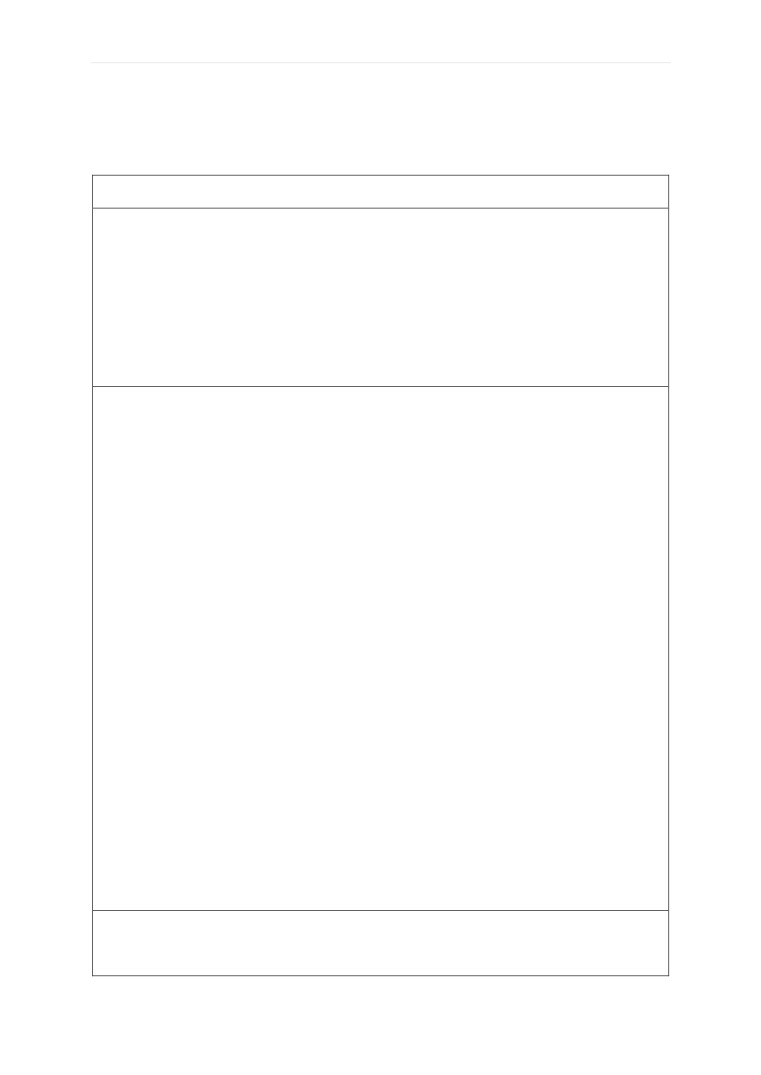1 | P a g e
ENERGY SECTOR
SKILLS:
A Skills Plan for New Anglia
Putting skills at the heart of building
a competitive and sustainable
local economy
v004.2
March 2018
Energy Sector Skills Plan v004.2
2 | P a g e
Background Context
The Energy Sector Skills Plan has been developed with the Energy sector in Norfolk and
Suffolk, working alongside the New Anglia Local Enterprise Partnership, the New Anglia
Skills Board and supported by SkillsReach.
SkillsReach was contracted to facilitate and prepare eight sector skills plans for the New
Anglia LEP priority sectors. The project was commissioned by the Education and Skills
Funding Agency, in partnership with New Anglia LEP, and funded through the European
Social Fund. Each Sector Skills plan and supporting Data Pack has been developed in
collaboration with local employers and other stakeholders.
The Sector Skills Plan has been developed in partnership with a number of local Energy
stakeholders including major suppliers to the Energy Industry located in New Anglia, EDF
Energy, Vattenfall, ScottishPower Renewables, EEEGR, ECITB, UEA and the New Anglia
FE College Group.
The New Anglia Skills Board places employers at the centre of decision making on skills in
Norfolk and Suffolk to ensure the skills system becomes more responsive to the needs of
employers, residents and the future economy.
SkillsReach is an established East of England-based strategic skills consultancy with an
associate project team with extensive experience of developing skills plans.
Energy Sector Skills Plan v004.2
3 | P a g e
Introduction
The East of England Energy Zone is unrivalled in the UK for its unique mix of gas and oil,
offshore renewables and nuclear energy production. It is a truly global, all-energy sector with
50 years’ experience and expertise that provides us the opportunity to nurture innovation
between sectors, promote transferability for these combined competencies and support the
development of the world’s largest windfarms.
The country faces a significant challenge: to replace its ageing capacity, provide power to
the nation’s homes and businesses and ensure that the nation’s lights do not go out. In rising
to that challenge, we also have the opportunity to create economic growth, to rebalance the
economy towards the regions and in favour of engineering and manufacturing and to attract
inward investment. Nowhere is there a greater opportunity to do that than in East Anglia,
which is already a significant player in the energy sector, with 35% to 45% of the nation’s
gas supply coming through the Bacton terminal, where the Sizewell C nuclear power station
will be built and with Lowestoft lying closest to the East Anglia Array, potentially the world’s
largest wind farm.
The Energy sector Skills Plan for New Anglia has been developed by both the public sector
and the energy industry in the East. It is essential that employers play a full and supporting
role in delivering the identified priority actions. Investing in skills and people is of paramount
importance. We need to improve our skills base to serve the large demand that will come
from the Southern North Sea in the next few years with regard to the oil and gas and wind
sectors and nuclear new build programme. If we do not do that, businesses will source that
expertise from other countries. With your support we will deliver this collective vision for skills
development across New Anglia and deliver on the potential growth of our Energy Coast.
Peter Aldous
Member of Parliament for Waveney
Energy Sector Skills Plan v004.2
4 | P a g e
Contents
Introduction
5
Overview of the Energy Sector
7
Sector Definition
13
Opportunities and Challenges
14
Employer Feedback
14
Meeting the Energy Skills Challenge and the Skills for Energy Programme (EEEGR)
21
College and University Developments
25
Further Views from industry and stakeholders on the responsiveness of skills provision . 25
The Energy Sector Skills Plan
28
Priorities for Action
28
Leadership and Implementation: Reviewing Existing Partnership Structures
29
Proposed Skills Interventions
33
Appendix A- Energy Skills Plan Development Process
45
Appendix B- Energy Evidence Report (Datapack Summary)
48
Appendix C- Current Skills and Training Provision
53
Energy Sector Skills Plan v004.2
5 | P a g e
Introduction
The New Anglia Local Enterprise Partnership (LEP) has sponsored the development of an
Energy Sector Skills Plan for the New Anglia area. The sector is defined as being a key
economic sector for the New Anglia economy. Across the area there is global all-energy
expertise with 50 years’ expertise in the oil and gas sector, and the world’s largest wind
farms in development off the coast, with a globally competitive renewables supply chain and
support industry.
The East of England Energy Zone is unrivalled in the UK for its unique mix of wind power,
gas and nuclear energy production. The supply chain has decades of experience and
expertise, recognised with Enterprise Zone status. The coast around Great Yarmouth and
Lowestoft is at the centre of the world’s largest market for offshore wind. Furthermore,
capital investment in energy worth £50bn is planned for the region by 2020, with the world’s
largest wind farm in development off the coast and the proposed development of Sizewell C
nuclear power station creating 25,000 jobs.
What A Skills Plan Is For
Skills Plans are being produced in response to our recognised key employment sectors for
Norfolk and Suffolk. The purpose of a skills plan is to ensure that businesses within these
sectors are able to benefit from an appropriately skilled, productive and readily available
workforce. We recognise how important the quality of the workforce is for business
competitiveness and for creating sustainable jobs and careers. Previous plans have been
produced for Health and Social Care, Digital Technologies and Construction.
The skills plan aims to create a social partnership programme between the Energy
sector’s industries and the relevant organisations that target and deliver support across the
areas of New Anglia that experience relatively high levels of economic and social
deprivation. The planned interventions aim to deliver lasting change for these areas by
ensuring relevant training and sustainable employment is made accessible to New Anglia’s
working age residents. Furthermore, that positive connection with education is in place to
inform, inspire and secure the next generation of the Energy Sector workforce.
The skills plans capture meaningful action to make a difference. For this- Energy Sector
Skills Plan, we have captured the following key priorities:
i.
Mobilising Industry Leadership- the plan explains the importance of developing
and securing a sustainable private sector led approach, overseeing skills
development and investment;
ii.
Developing a higher technical engineering offer- feedback from employers has
highlighted the need for a better supply of local, graduate level, mechanical and
electrical engineering skills.
Energy Sector Skills Plan v004.2
6 | P a g e
iii.
Building ‘intra-industry’ and ‘inter-sector’ workforce transferability- feedback
from employers highlighted the need to enable businesses within the Energy sector
to access skills and workers locally from other industries at key times, as much of
their requirements are generic.
iv.
Addressing overall ‘Energy Skills Fragility’- employers are aware of jobs and key
functions that experience skills shortages. We have defined these as fragile areas
that require an appropriate training response, accessible to learners and employers
across all of New Anglia.
v.
Building Inclusive Local Capacity & Securing the Future Energy Workforce -
there are a number of pressure points and key concerns identified linked to the future
supply of employees into the sector overall. We have identified a series of actions to
engage with schools, open up opportunities to move into jobs within the Energy
sector and address imbalances in the workforce linked to age and gender. In
addition, the sector often looks externally out of area to for its labour supply, it is
important to work with employers to tackle the barriers that inhibit the growth in local
residents securing employment in the Energy sector.
vi.
Apprenticeships and Group Training- Given the implementation of the
apprenticeship levy- there should be a more coordinated approach to gather and
deliver apprenticeships linked to employer needs. This plan sets out steps to create a
more cooperative approach towards delivering suitably trained apprenticeships.
The skills plan expands these six priorities as key interventions- demonstrating the evidence,
defining the rationale, clarifying the action, leadership, timing and support resources- for
delivery.
Energy Sector Skills Plan v004.2
7 | P a g e
Overview of the Energy Sector
New Anglia’s Energy Sector is internationally significant, with major operational
energy infrastructure assets and planned infrastructure development across the key
industries of Offshore Wind, Oil and Gas, Nuclear and Low Carbon Renewable
Energy.
The unique combination of geographical phenomena, established, deep rooted expertise
and investment spanning over 50 years- has helped shape a world leading energy presence.
At an aggregate level New Anglia’s combined energy output plays a pivotal role in securing
the UK’s ongoing energy demands; an output that is set to grow significantly throughout the
21st century. Furthermore, the combination of development, expansion of existing assets
and decommissioning programmes- draws together a sector of significant economic value
and market opportunity; supported by extensive, high quality, supply chains.
Offshore Wind
The UK has been the world leader for offshore wind for almost a decade. The energy
industry infrastructure in place through the oil and gas markets, along with the unique
environmental and geographical phenomena along the Southern North Sea, has enabled the
offshore wind industry to agglomerate and precipitate a rapid plan of further wind farm
development. In 2017 Cambridge Econometrics reported that by 2032, the total amount of
direct employment in the UK offshore wind sector could be in the region of 21,000 FTE jobs.
Currently there are 10,000 FTEs jobs in the sector, however taking into account indirect and
induced employment relating to the industry, it could result in an additional 37,000 FTE jobs
by 2032. They report that the bulk of employment is expected to be along the east coast of
England.1
The Offshore Wind Sector is working collaboratively at a national level with the UK
Government to develop a Sector Deal that transforms people, places and power across the
UK2. A key milestone in achieving this transformation is deploying up to a cumulative total
capacity of 30GW of offshore wind by 2030. National analysis3 is helping to benchmark the
required energy output target against GDP and job creation targets, giving an overarching
business case for infrastructure investment, and thus a catalyst of labour and skills demand
on a long-term basis. This will unlock the investment that will drive a step-change in
increased productivity, export opportunities and the growth of a skilled and diverse workforce
around the UK.
The East of England coast plays host to nearly 70% of the total capacity installed in UK
waters. A summary below captures the key offshore wind developments, highlighting the
overall significance of the operational and planned wind farm infrastructure for New Anglia:
1 Cambridge Econometrics- Future UK Employment in the Offshore Wind Industry (2017)
2 RenewableUK- Offshore Wind Overview- Sector Deal Summary (2018)
3 BVG Associates- Mapping Offshore Wind Target Supply
Energy Sector Skills Plan v004.2
8 | P a g e
•
Dudgeon (Dudgeon Offshore Wind Ltd (a subsidiary of a business consortium
which includes Statoil)- a fully commissioned wind farm generating an optimum
402 MW, located 32 km north of Cromer on the Norfolk coast. The onshore
connection to grid is located at Necton.
•
Greater Gabbard (SSE majority) - a 504MW output operational wind farm installed
on sand banks 23 km off the Suffolk Coast.
•
Scroby Sands (Powergen Renewables) - an operational wind farm located 2.5 km
off the coast from Great Yarmouth, Norfolk, with an estimated 60 MW output.
•
Sheringham Shoal (Statoil majority owned) - a 317 MW operational wind farm
spread of 35 km2 located 17 km from the Sheringham coast in Norfolk.
•
East Anglia One and East Anglia One North (ScottishPower Renewables)- East
Anglia One is currently under construction and East Anglia One North is in the
assessment process, combining for a 209 km2 offshore wind zone, profiled to
generate up to 800 MW in energy- located 36 km off the coast from Lowestoft;
•
East Anglia Two (ScottishPower Renewables)- at the early stage assessment
process for a 205 km2 offshore wind zone, profiled to generate up to 900 MW in
energy- located 31 km off the coast from Lowestoft;
•
East Anglia Three (ScottishPower Renewables)- consent was given in August
2017 for the development of a 305 km2, 172 turbine wind farm that is expected to
generate up to 1200 MW of electricity when fully operational. The infrastructure
scope will include up to four offshore collector stations and up to two offshore
converter station platforms. Up to four subsea export cables will be laid to transmit
electricity from the offshore platforms to shore, with anticipated interconnector cables
between the further planned farms- at East Anglia ONE and East Anglia THREE.
Landfall is sited at Bawdsey with onshore transition pits to join the offshore and
onshore cables and up to four onshore underground cables pulled through existing
ducting to be laid by East Anglia ONE, running for approximately 37 km from landfall
to the connection point at Bramford, Suffolk, with jointing pits, to transmit electricity to
a new onshore transformer substation. An onshore transformer substation at
Bramford, Suffolk, to connect the offshore wind farm to the National Grid will also be
built.
•
Norfolk Vanguard (Vattenfall) - a 1.8 GW development proposal classed as a
Nationally Significant Infrastructure Project (NSIP) under the 2008 Planning Act. The
proposed wind farm will be located 47km from the Norfolk Coast and Vattenfall has
accepted National Grid’s connection offers for Norfolk Vanguard based on an
onshore connection point at the existing 400kV Necton National Grid Substation.
•
Norfolk Boreas (Vattenfall) - a 1.8 GW ‘sister project’ development proposal also
classed as a Nationally Significant Infrastructure Project (NSIP) under the 2008
Planning Act. As with Vanguard, the proposed ‘Boreas’ wind farm will be located
47km from the Norfolk Coast and Vattenfall has accepted National Grid’s connection
offers for Norfolk Boreas based at the existing 400kV Necton National Grid
Substation.
•
Hornsea Project Three (Orsted- formerly DONG)- a pre-application stage proposal
from Orsted scoped at a 696 km2 wind farm installation off the North Norfolk coast,
expected to generate up to 2.4GW of electricity.
Energy Sector Skills Plan v004.2
9 | P a g e
The total wind farm output once planned infrastructure becomes operational and transmits to
grid is expected to be approximately 10.1 GW of combined output, roughly the size of three
next generation nuclear reactors.
Employment growth in the sector has been substantial with the industry workforce
contributing to the 2,400 workers in New Anglia within the energy production and
distributions sub-sector. The increase in automation technology linked to surveying practices
(drones, marine surveying) and the advent of next generation turbine technology, is however
likely to moderate the employment growth for offshore wind overall.
Oil and Gas
The UK Continental Shelf (UKCS) contains substantial oil and gas reserves (with an
estimated 20 billion barrels of oil and gas still yet to recover) and its industry plays a pivotal
role in contributing to the UK’s security of energy supply. The scale of economic contribution
and capital investment outweighs the majority of other economic sectors across the UK- with
an estimated £8.3 billion capital investment (in 2016) and £7 billion in operating assets.4
Latest estimates show that the UK offshore oil and gas industry supports more than 302,000
jobs. Employment is spread across the country, with almost 60 per cent in England, 38 per
cent in Scotland and the remainder across Northern Ireland and Wales. The estimated total
employment share for East of England was at 5% (7,500) in 2017. The latest employment
estimate is 160,000 lower than the peak of more than 460,000 jobs in 2014, outlining the
downturn in the oil market from the contraction of oil prices. The pace of contraction in
employment has slowed to 4.2 per cent (2016-17), compared with 15.6 per cent from 2015-
16 and 19.4 per cent from 2014-15.5
More than 52,000 people travelled offshore in the UK in 2016, back in line with the long-term
trend seen before 2012. The core offshore workforce (those spending more than 100 days
offshore per year) decreased by 18 per cent from 2014-16, from 28,990 to 23,651. As the
UK Continental Shelf (UKCS) becomes more efficient, productivity has improved with a 42
per cent increase in oil and gas production per core offshore worker since 2014. The
average age of offshore workers has increased to 42.7 from 40.7 in 2014. Around 15 per
cent of the offshore workforce is non-British citizens, around half of whom are from the EU.
New Anglia is an established hub for the oil and gas industry and a large base for major and
international businesses. With a large local workforce pool accessible, including established
channels for ‘importing’ contractors and vast relevant experience, the region has maintained
its reputation as a national centre for offshore activity.
The Bacton Gas Terminal located on the North Norfolk Coast is one of the six main UK gas
terminals which receives gas from the UKCS. Covering an area of 180 hectares its
operating terminals are run by Shell, Eni, Perenco, BBL and the National Grid. Bacton is the
4 Oil & Gas UK, Workforce Report (2017)
5 Oil & Gas UK, Workforce Report (2017)
Energy Sector Skills Plan v004.2
10 | P a g e
recipient terminal for the GDF Cygnus development which with a £1.4 billion capex is the
largest UK gas discovery to be developed in the last 25 years.
The oil and gas supply chain is diffuse and significant in its reach across the region, the UK
and internationally. Key supply chain categories include:
• marine and subsea,
• facilities engineering,
• operations and maintenance,
• reservoirs, wells and drilling,
• support services and
• major multi-service contracting.
Gas regularly meets up to 50% of GB’s demand for energy, meaning an increasingly
important role for gas extraction and transportation activities, given the advances in drilling
and fracturing technologies that enable former deeper embedded gas fields to be accessed.
Demand therefore for energy production from gas is expected to rise, which further
emphasises the exploration, extraction and engineering activities for the gas market.
Many of the structures producing oil and gas have a limited lifespan, often 25-40 years, and
an increasing number are due to be taken out of service. When redundant, they must be
removed and disposed of, ensuring that the surrounding area is safe from environmental
contamination. Decommissioning has become a major business within the oil and gas
industry and is a lengthy and high cost operation. Decommissioning of existing North Sea oil
and gas facilities is projected to cost £24-36bn over the next 30 years.
There is a however a recognised renaissance in gas production across the Southern North
Sea area, with advancements in drilling technology and recovery techniques enabling a
previous ‘mature’/late-life gas industry and infrastructure to benefit from higher yields and
market efficiencies.
Nuclear Power- Investment Overview
Energy companies are currently planning to build up to 19GW of new nuclear power capacity
in the UK, with the first new reactors expected to be operational in the mid-2020s.
It is estimated that this new generation of nuclear power stations will require a total
investment of at least £70 billion.6 The UK currently has 15 reactors with a total generating
capacity of 10 GW of electricity. These stations generate around a fifth of the UK’s electricity
- however they are all scheduled to be retired by 2030. The exception is Sizewell B located
in Suffolk, the UK’s only pressurised water reactor (PWR), which began operations in 1995.
The nuclear new build programme for the UK is for five new nuclear plants by 2030, plus a
decommissioning programme. This means demand is forecast to rise from 87,560 full time
6 Nuclear AMRC New Build Plans (2017)
Energy Sector Skills Plan v004.2
11 | P a g e
equivalent staff (FTEs) in 2017 to 100,619 by 2021, requiring a total industry inflow of 7,000
FTEs per year, once replacement demand is considered.7
EDF Energy is proposing to build ‘Sizewell C’ a two EPR reactor (a third-generation water
pressurised reactor type) development located north of the existing Sizewell B operating
plant, capable of generating enough electricity to power around 5 million homes- 3.2 GW
output. EDF Energy considers Sizewell C to be one of the biggest and most technologically
complex construction projects ever built in the UK. Its peak operational capability would
generate electricity for 60 years and over the lifetime of the construction an estimated 25,000
employment opportunities would be created. At its peak the construction site workforce
would be about 5,600 people. Once operational, the new power station would support
around 900 permanent jobs. EDF Energy has completed Stage One and Two of its pre-
application consultation for the proposed Sizewell C project. In conjunction with the formal
planning and community consultation, EDF Energy is advancing plans to formalise its supply
chain requirement. An estimated excess of 140 Tier 1 contractors, each planning to deliver
multi-million to several billion-pound contracts and each with multiple Tier 2 and 3 supply
chain requirements, means the programme opportunities across the construction,
manufacturing, engineering, transport and logistics supplier base are significant. EDF
Energy is working closely with the Suffolk Chamber of Commerce to coordinate the
development of a Sizewell Supplier Database.
Nuclear- Current Operational Demands and Decommissioning
In the East of England EDF Energy also operates Sizewell B power station which employs
575 staff and 250 contracting partners. Sizewell B is scheduled to operate until 2035 but this
could be extended by a further 20 years. Sizewell B generates an average of 1.2GW
electricity into the national grid via the UK’s only pressurised water reactor.
There are further opportunities in nuclear power station decommissioning at Sizewell A,
Suffolk and Bradwell, Essex, which could be worth around £3bn to the regional economy.
NSA Nuclear model a peak demand forecast of 100,619 FTEs overall nationally for the
Nuclear sector of which an estimated 15,000 FTEs will be focused within key
decommissioning activity.8
Low Carbon Renewable Energy
The UK low carbon and renewable energy (LCRE) economy grew by 5.0% to £42.6 billion in
2016, from £40.5 billion in 2015. Nationally the number of employees working directly in the
LCRE economy in the UK grew by 3.3% to 208,000 fulltime equivalents (FTE) in 2016, from
201,500 in 2015. In 2016, almost half (45.8%) of the UK’s turnover from onshore wind
activities was generated in Scotland (£1.5 billion); by contrast, over 80% (£2.4 billion) of the
UK’s turnover from offshore wind activities was generated in England.9
7 Cogent Skills/NSA Nuclear- NSA Nuclear Workforce Assessment (2017)
8 Cogent Skills/NSA Nuclear- NSA Nuclear Workforce Assessment (2017)
9 ONS, UK Environmental Accounts: LCRE Survey (2016)
Energy Sector Skills Plan v004.2
12 | P a g e
The Office for National Statistics Low Carbon and Renewable Energy (LCRE) Economy
Survey found that in England, 83,000 businesses (equivalent to 4.4 per cent of all non-
financial businesses in England) were active in the LCRE sectors in 2014. An estimated
201,000 full time equivalents (FTEs) were employed, representing 1.3 per cent of all non-
financial FTE employees in England. If we apply these national proportions to the New
Anglia economy, then we can estimate that there are approximately 3,000 businesses
operating in the LCRE sector employing around 6,700 FTEs (please note the use of full-time
equivalent employees as opposed to employment used for the other high performing and
underpinning sectors).
Given the pre-dominance of traditional industries such as agriculture and manufacturing
(with pre-existing skills and knowledge suited to diversifying into the LCRE sector), New
Anglia’s geography (coastal, with proximity and good access to shallow off-shore sights
which are preferred for off-shore wind farms), weather patterns (above average sunshine
duration, and below average levels of rain, make solar power an attractive energy source for
households and businesses alike), and the presence of the Sizewell Nuclear Reactor mean
that these figures for employment and business numbers are likely to be fairly conservative.
New Anglia’s LCRE industry is diverse. Given the major agri-tech sector activity, there is a
close association between agricultural by-product and waste and a growing bio-energy
industry across the area. Research into segmenting the LCRE industry across New Anglia
highlighted that for bio-energy there are growing number of micro-generating, farm-based
enterprises, with operating anaerobic digestion and biomass activities. These are in
essence micro-industries, often involving a small association of farming businesses
developing arm’s length CIC based or private holdings for micro generation, combined heat
and power solutions and output to grid- activity. Larger bio-energy and dedicated AD power
plants are more prevalent in Suffolk, with Adnams Bio-energy near Southwold and two
dedicated AD plants run by BioCow in the area.
Alongside bio-energy, New Anglia is home to a number of domestic renewable energy
service suppliers, accessing a range of renewable heat and energy products and installation
solutions from a broader supply base. In addition, there is growing significance across
wave, tidal, and marine based energy research and solutions- with Orbis Energy acting as
an important incubator and catalyst for research led renewable energy activity.
Energy Sector Skills Plan v004.2
13 | P a g e
Sector Definition
For the purposes of this work we have agreed with the New Anglia LEP to follow their
existing definition of the Energy sector, as detailed within the current Strategic Economic
Plan (SEP) (2017). This definition focuses on the core elements of activity - oil, gas,
offshore wind, onshore wind and renewable technologies and nuclear.
The data analysis has also mapped the relevant SIC codes linked to maritime activity. This
is an attempt to capture the element of maritime activity that supports offshore energy
developments.
There are three main additional contextual points to clarify in the scoping of the sector
overall, to understand the data analysis focus and methodology for employer/stakeholder
consultation, these are:
•
The definition includes a revised focus on onshore renewable and low carbon
activity- to align with the New Anglia LEP’s 2017 Strategic Economic Plan. This
refers in particular to energy produced through micro-generation renewable
technology made available through bio-energy, solar, hydro and energy storage to
power. The consultation key findings highlight the importance of aligning the
crosscutting issues to take in to account low carbon renewable technology-
particularly for key areas linked to STEM skills and engagement with careers and
enterprise initiatives- such as engineering and advanced manufacturing;
•
Furthermore, the analysis of the economic performance of the sector, including its
growth and productivity, employer base, employment size and skills and attainment-
focus on the SIC framework developed based on the New Anglia LEP definition. To
this end the analysis does not directly include construction and engineering related
activity. The consultation however has captured previous research and input from
key stakeholders on the significant common areas of activity between these sectors
and therefore has made recommendations demonstrating the importance of cross-
sector building mobility and flexibility of skills and labour supply. Much of the
mapping of the Energy sector that has been performed in the past has taken this
broader definition, which allows supply chain data to significantly increase the scale
of the Energy sector overall;
•
Comparator areas have been scoped based on other nationally significant
concentrations of the defined sector as well as closer coastal and nuclear
developments. Regional data presented for comparator reasons are based on
legacy RDA regional areas rather than the recent devolved LEP regional area
definitions.
Energy Sector Skills Plan v004.2
14 | P a g e
Opportunities and Challenges
A range of employer interest groups, employers and key stakeholders were consulted during
the process of developing the Energy Skills Plan. Consultation with EEEGR’s Special
Interest Groups- covering Offshore Wind, Late Life & Decommissioning, Marine Exploration
and Southern North Sea Gas Extraction/Rejuvenation- has enabled a detailed picture of the
technical advances and market developments to be assessed. In addition, detailed review of
relevant national and local research and policy areas has helped position the issues and
emerging interventions within a relevant industrial context.
In addition, an employer survey was also disseminated via EEEGR and the Chamber of
Commerce to businesses engaged- either primarily or via supply chain activity- to the
industries within the sector. In summary, the consultation groups consisted of a combination
of semi-structured interviews, direct 1-2-1 consultations and group ‘task and finish’ group
sessions with:
• Energy Sector employers- including Tier 1 clients, Tier 2 OEMs and SMEs within
each key industry area and across supply chains;
• Key Industry Stakeholders and Business Representative Groups- including ECITB,
EEEGR, NSA Nuclear, CITB, Chamber of Commerce;
• Key partners of interest and influence- the LEP, Local Authorities, industry
consultants; and
• Educational Institutes and training providers- including FE, HE and the private
training market.
Employer Feedback
Offshore Wind
In a strategic context defining and measuring the major offshore wind workforce needs are
affected by developments at a national level, particularly the formal processes linked to the
planning and approval of the key infrastructure pipeline. The next generation of the offshore
programme for New Anglia is set to dwarf the existing operational activity in terms of scale
and output and aligns with the strategic importance of position the UK offshore wind industry
as the global leader. A key development linked to this is the nascent national Sector Deal
programme emerging as a response positioned in the new Industrial Strategy.
The Industrial Strategy presents Sector Deals as a unique opportunity for government and
private investment to be balanced across a strategic framework to underpin economic
growth and competitiveness. Critically it positions ‘people’ as one of several strategic
themes to frame each Sector Deal- alongside ‘ideas’, ‘infrastructure’ and ‘business
environment’. The Industrial Strategy overall outlines the importance of ‘people’ within the
national economic context, highlighting the investment in STEM skills, new technical route
ways and a new National Careers Strategy- as important cornerstones for national and local
policy. The Sector Deals already announced, which include construction and life sciences-
Energy Sector Skills Plan v004.2
15 | P a g e
two other key sectors for New Anglia- capture how industry will respond through joint
ownership and investment with government for measures that include skills development.
Both Vattenfall and ScottishPower Renewables have highlighted their engagement with the
national Sector Deal initiative- with collaboration towards an Offshore Renewable Sector
Deal. Although at its early stages and with recognition of what is essentially a national
competitive process, given New Anglia’s scale of activity in this area already key feedback
highlights that New Anglia could be positioned as centre of excellence for the Offshore Wind
Industry. A specific emphasis on operations and maintenance, given the existing and
planned infrastructure and the proximity of other key industries providing a relevant skills and
training base- namely oil, gas and nuclear- for New Anglia may act as a catalyst to stimulate
a range of supply side priorities including-
• Greater influence over the careers and enterprise programme locally with enhanced
private sector involvement;
• More collaboration between employers as a group and HE to inform degree and
postgraduate degree technical curriculum, with an added focus on work experience
and graduate internship programmes;
• Defining technical vocational route ways, including apprenticeship standards with
Tier 1 and OEM industry leading the development of apprenticeship engagement
across their supply chains;
Overall the workforce demands for the offshore wind industry are project cycle based -from
the planning, consultation stages through to new build, operations and maintenance.
Feedback from employers indicates a 3:1 ratio between workforce needs at peak build
compared to live running operations. As with other parts of the sector overall this leads to a
transient, contractor based, workforce- with around 25% of the overall workforce being
permanently employed at the Tier 1 level.
Overall the employers with current operational activity in the area experience a ‘polarised’
apprenticeship offer due to OEM constraints and the 5-year manufacturer warranty lead out
time restricting Tier 1 investment in wind turbine training. Analysis indicated that Level 3
Engineering Maintenance apprenticeship provision was actively used through East Coast
College (SSE) for general, performing engineering operational (PEO) roles at turbine base
and sub-station (heavy electrical, fabrication etc) activities but dedicated turbine engineering
training was either dominated via OEMs internally or out of area training, with the University
of Strathclyde cited as an area of expertise in higher technical engineering output.
Employers highlight that recruitment is generally done through national channels, often with
contractors being brought in from previous or concurrent national projects. Key skills needs
include project management skills linked to heavily oriented project-based work methods.
The civil infrastructure investment stages require a mixture of key roles and trade-based
skills from across construction and civil engineering, including digging, cabling/piping and
onshore new build for power transmission.
Energy Sector Skills Plan v004.2
16 | P a g e
Low Carbon Renewable Energy (LCRE)
Key skills needs for this part of the LCRE market includes technical installation and
operational training for CHP/biomass/AD kit operation and health safety training linked to
environmental hazards from the operating environment, such as toxic methane gases.
Training provision in this area is usually provided through non RQF accredited, short,
technical training- paid for by the business and delivered through the private training market-
often linked to industry representative groups- such as HETAS for biomass and sector skills
bodies (e.g. Cogent Skills for AD training through their national training programmes).
Biomass installation usually requires a combination of gas accredited qualifications,
combined with working within a ‘wet’ environment. HETAS provide a direct entry (with NVQ
L2/3 pre-requisites) programme for biomass installation, with training available from its
approved training centre in Sudbury, Suffolk.
The Solar PV industry is broad and contains a high percentage of sole trader, micro and
SME enterprises. There are however an increasing number of enterprises developing a
broader renewable solution, that aims to combine solar PV, with solar thermal and
biomass/CHP installation. NICEIC approved short courses are the standard training route
way for solar PV installation and maintenance, solar thermal and heat pump
installation/maintenance activity. The training is delivered nationwide and usually out of the
New Anglia region.
Consultation with employers within the energy utility industry has highlighted the growing
importance of New Anglia being the home to a number of domestic focused renewable heat
and energy service providers. These provide a client focused assessment and consultation
service, using approved suppliers of renewable heat and power solutions- air source
heating, ground source heating, solar PV and biomass/CHP installations. In addition, there
is a growing demand for intelligent sensoring solutions to regulate heat, lighting, power
output/generation and consumption- linked to plugs, domestic sensor units with digital
capture and transmission technologies.
Employers operating in this market require a balance between financial, commercial and
technical skills. Understanding the needs of the domestic client and presenting solutions
representative of latest industry dynamics and products- requires problem solving and strong
relationship management skills. Feedback from employers has indicated that the workforce
operating in this area is local and is often sourced from a customer service background, up
to a graduate level. There are however no specific courses available linked to the domestic
energy market, with apprenticeship route ways usually following a customer service or
business administration path.
Oil and Gas
New Anglia is home to some of the bigger international employers that provide installation,
maintenance and decommissioning facilities- for Greenfield and Brownfield projects based
off the East Coast in New Anglia. The service listings for many of the key employers
primarily based in Great Yarmouth and Lowestoft range from well drilling and installation
Energy Sector Skills Plan v004.2
17 | P a g e
engineering, through to operational roles, on and offshore logistics, cleaning, marine growth
removal, pipe cutting and removing, surveying and decommissioning.
The oil and gas industry has traditionally required a broad engineering skill set across a
range of key disciplines: installation, operations and maintenance, through electrical,
manufacturing and civil/construction route ways. Overall the industry requires a workforce
that has a high level of accredited training (at least to a traditional HNC level/RQF 4) but with
the adaptability to be able to specialise for key roles, such as- crane technicians and
specialist metering technicians. Several employers expressed the importance of planning
‘vertical, horizontal and in-depth skill sets’ for oil and gas- to enable a flexible workforce to be
able to move horizontally between projects (and often other industries- oil/gas/offshore
wind), to provide in-depth capability and develop project management/leadership potential
for vertical Tier 1/OEM/supply chain relationship management.
Feedback from employers within the oil and gas installation and maintenance space
highlights that there is a paucity of labour supply within instrument technician roles, which
bears an increasingly aging (45+) workforce, with contractors often only available out of the
area for specific project based cyclical demands. Feedback highlighted that there was a
robust ‘generic’ training offer up to foundation level but there was a lack of higher technical
engineering route ways- both via traditional graduate engineering programmes and through
vocational training options. Decommissioning and late life work demands increasingly look
for specialised technical roles linked to fault finding, niche servicing and operational
requirements- and the ‘skills offer’ lacked a ‘deep rooted, working environment, technical
discipline’. The feedback overall highlighted the need for a better supply of local, graduate
level, mechanical and electrical engineering skills. Furthermore, well plugging and
abandonment is a skill set in its own right; as the Southern North Sea (SNS) is one of the
first regions to undertake large scale decommissioning there is a real potential to create
specialist skills in this sector, which could be exported globally.
In addition, employers highlighted the increasing commercial skills needed to engage with
operations and maintenance demands through the primary Tier 1s, OEMs and suppliers-
with the importance of financial skills in value chain management- marketing, sales,
investment feasibility planning. Furthermore, the advance of gas extraction techniques and
marine exploration/surveying technology- employers highlighted the need for the workforce
to demonstrate greater transferability of skills between digital, surveying,
engineering/manufacturing and maintenance services. Key examples include:
• the transition from CAD to GIS cloud / thin client web-based mapping systems for
marine surveying, including an increasing use of drone technology. Surveying
practice is becoming increasingly sophisticated through digital and automation
technologies;
• the increased importance of drilling and fracturing operations for the extraction of
deep bed ‘tight’ gas;
• delivery of augmented reality/virtual reality techniques and sub-sea diving technology
for wind turbine OEM production and offshore wind farm development;
• a generic subset of skills linked to oil decommissioning, gas and offshore- for
example survival training, maintenance/service operatives, electrical engineering;
Energy Sector Skills Plan v004.2
18 | P a g e
Nuclear
For nuclear- both the ECITB and the NSA for Nuclear emphasise the key point of needing a
mobile and flexible workforce. Cogent’s Nuclear Workforce Assessment (2017) highlighted
the overall skills demands linked to both the new nuclear programme and national
decommissioning. Engineering and trade-based disciplines are forecast to represent the
most significant skills demands, with a strong emphasis on civil engineering- but it is the
pooling of strongly related occupations that is highlighted as critical to meet fluctuating
demands:
“The nuclear industry renaissance is taking place against the backdrop of both a
large, well-developed decommissioning activity, and a significant defence
programme. Large parts of the supply chains are distinct, but equally strong overlaps
exist. Whether on different projects within the same sector, or between civil and
defence sectors, many of the skills requirements are the same, or similar. It follows
that there is great benefit in ensuring that the development and utilisation of skills
happens in an efficient and cost-effective manner. Understanding the mobility of
skills, and how that knowledge can be applied to the phasing of projects, will be
essential in supporting the industry and strengthening those skills currently regarded
as fragile.” (Nuclear Workforce Assessment, 2017, NSA Nuclear/Cogent).
The Nuclear Workforce Assessment classifies the skills needs of the nuclear industry into
three bands:
• Band1 - subject matter experts equating to 1% of the overall workforce, representing
the highly specialised skills for the nuclear industry;
• Band 2- nuclear specific skills equating to 18% of the overall workforce, representing
nuclear specialised skills relevant to the industry, for example nuclear safety case
engineers; and
• Band 3- generic skills equating to 81% of the overall workforce, which may also be at
a higher skilled level but not nuclear specific.
Across the three bands a number of ‘fragile skills’, highlighting the supply into project
resource areas most at risk from poor supply- these include:
• Control and instrument engineers;
• Specialist safety engineers;
• Commissioning engineers
• Electrical engineers; and
• Project and planning control.
Feedback from EDF Energy through the consultation corroborates the national picture
reported by NSA/Cogent. Overall, New Anglia requires a workforce development
programme for Nuclear that can enable the cross-referral to and from other key industries
within the Energy sector and other relevant sectors in the local economy- namely
construction and manufacturing. This allows a more resilient and flexible response towards
the changing cyclical demands, which recognising the upturn in the new Nuclear
Energy Sector Skills Plan v004.2
19 | P a g e
programme, alongside offshore infrastructure development against the supply of key trades
and roles within construction and horizontal workforce ‘virement’ from oil and gas.
Cross-cutting Issues
Energy-Construction- data evidence and feedback from employers/stakeholders highlights
that the relationship that the Energy sector has with Construction is the most prominent
crosscutting issue. The onshore construction linked to the offshore wind combined with the
new nuclear programme will create a massive increase in construction related roles and
functions over the next ten years for New Anglia. Planning effectively for upscale and
downscale stages, skills and labour supply will become critical elements to ensure the
benefits of the investment are maximised for the local area. Civil engineering disciplines can
also be attributed to demands linked to onshore infrastructure development for energy to
grid, from offshore wind farms and hydro/tidal schemes.
CITB have previously created solutions to enable smooth transfer between sectors, including
construction and nuclear. A specific example of this is the general Construction ILM with
niche Nuclear modules available to those who need to specialise and build on a strong
generic base of skills. This approach also increases efficiencies and reduces duplication of
training for those crossing between sectors. In relation to recording individual’s construction
related achievements, in April CITB will launch the Construction Training
Register. Eventually this will be a record of all construction related training that each
individual has completed. This will help with transferring between sectors as all
standardised sector training will be recorded and will give employers confidence in what
training has been completed. This will be launched alongside the Construction Training
Directory which will list the availability all standardised construction related training (which is
within CITBs scope) nationally and in a specific location. These systems will support CITB in
directing funding to areas of greatest need and in incentivising training in ‘fragile’
occupations. CITB have indicated their support with the ongoing development of the
Energy Skills Plan’s key interventions- looking ahead.
The data analysis captured within the Data Pack, highlights the skills demands linked to
growth in RQF Level 4+ roles- at first year degree (inc. HNC L4) level and higher ‘Chartered’
professional level, which is particularly prominent due to the impact of replacement of
existing roles linked to age and retirement. Analysis also highlighted that entry level 2/3
roles form an important part of the growth forecast for the sector overall- particularly for
trades, operatives and transport roles.
Electricity Generation and Community Energy- the demise of petrol and diesel engines,
combined with the ascendency of electric vehicles will act as a catalyst for expanding the
generation, storage and usage of electricity. The impact of which will stimulate new
investments and technical solutions across the power generation and distribution network as
a whole and will likely increase the viability for micro generating, LCRE investment at both a
commercial and domestic level.
Energy Sector Skills Plan v004.2
20 | P a g e
Community energy alone is defined as covering all aspects of collective action to reduce,
purchase, manage and generate energy. The skill set relevant to this area draws in a broad
range of technical and non-technical- knowledge/financial and management skills.
Community energy projects have an emphasis on local engagement, local leadership and
control and the local community benefiting collectively from the outcomes. Furthermore
community-led action can often tackle challenging issues around energy, with community
groups well placed to understand their local areas and to bring people together with common
purpose. An expanding community energy market referenced by the Department of
Business, Energy and Industrial Strategy (BEIS) covers:
• Community-owned renewable electricity installations such as solar photovoltaic
(PV) panels, wind turbines or hydroelectric generation.
• Members of the community jointly switching to a renewable heat sources.
• Working in partnership with the local Distribution Network Operator (DNO) to pilot
smart technologies.
• Collective purchasing of heating oil for off gas-grid communities
• Collective switching of electricity or gas suppliers.
Aligned with this is the issue of including the enablement of community energy and LCRE
solutions linked to economic development initiatives that tackle economic and social
disadvantage. Mapping and supporting the acquisition of skills within this context becomes
an important aspect of the aims of developing a crosscutting New Anglia social partnership
plan for the sector.
Further employer consultation also highlighted the following crosscutting issues:
• engineering fabrication and installation suppliers- pipe cutting and installation, steel
fixing, maintenance and downstream supply project management- work broadly
across a range of sectors in the New Anglia economy- with petrochemical, agri-tech,
construction and energy- representing a generic market demand for ‘craft’
engineering trades. Feedback from employers has highlighted that craft ‘site skills’-
measuring, angling, offsetting, cutting and welding (to required standards) - are in
high demand and there is a lack of local training available. One key employer
highlighted that they were increasingly looking to EU labour to fulfil site roles,
particularly for welding functions (approx. 10% of the workforce);
• the growing importance of aligning advanced manufacturing and engineering with
energy in the context of Industry 4.0, particularly on the back of the increasing use of
digital and cloud-based technologies.
• feedback from employers and from national reports (NSA Workforce Skills- highlights
the gender imbalance across the sector’s key industries- both in terms of higher
skilled, higher paid roles and the supply and upward progression into key roles
overall (ECITB highlights that 92% of the engineering construction sector are male)10;
10 ECITB- Engineering Today (2017)
Energy Sector Skills Plan v004.2
21 | P a g e
• concerns regarding the relevancy of contemporary industry experience of the
trainers/lecturers at FE and HE level- particularly linked to the increasing use of
surveying technology, advances in turbine technology, advanced engineering
specialism, changing decommissioning demands on Tier 1 suppliers and gas
extraction operations;
• enabling Tier 1, OEMs and broader supply chains need to better understand the fit
between ‘on the job’ skills required for commercial operations and the current
provision/qualification offer. Training is usually presented by programme title and
qualification rather than career pathway and occupational areas;
Meeting the Energy Skills Challenge and the Skills for Energy Programme
(EEEGR)
Efforts to consult with the SME base locally highlighted the view from smaller businesses,
previously consulted via earlier sector-based research, that many of the strategic issues they
experienced regarding skills are still relevant. Specifically, the issues that were captured in
the 2012 report- Meeting the Energy Skills Challenge. This detailed analysis of sector
development and skills supply carried out in the 2012 report included canvassing a wide
range of employers and stakeholders across the sector. Its key findings were instrumental in
establishing the EEEGR led ‘Skills for Energy’ programme.
The 2012 report takes a clear strategic shape in assessing the ‘structural issues’ to develop
responsiveness, employer ownership and partnership delivery/alignment- under the ‘Skills
for Energy’ banner- with emphasis on sharing skills intelligence, closer cooperation between
suppliers and clients. The report’s key recommendations included11:
• Recognising growth in offshore, nuclear, marine and CCS, with some growth in
micro-generation;
• No critical changes to technical skills demands- with ‘underpinning needs’ for
engineering- operations, installation, maintenance and cross-cutting health and
safety needs to enable the integration of some technologies- (e.g. micro generation,
bio-energy.)
• Oil and gas- to offshore and low carbon demands- skills transferability needs
highlighted, with emphasis on greater cooperation between accrediting partners for
H&S;
• Engineering with project management experience- such as marine engineering,
aeronautical, geology and generic project management and commercial development
skills;
• STEM focus for graduate, FE and school engagement;
• Training offered is too generic and not enough industry specialism across all areas,
particularly engineering roles;
11 Nautilus Consulting/EEEGR- Meeting the Energy Skills Challenge (2012)
Energy Sector Skills Plan v004.2
22 | P a g e
• Embedding employer relationship management and brokering for SMEs in group
purchasing/GTA type modelling;
The Skills for Energy programme led by EEEGR since 2012 highlights some of the key
recommendations from the 2012 report, with a key focus on coordinating the development of
the Energy Skills Foundation programme in partnership with East Coast College and ECITB.
The foundation programme acts as an important pipeline into the industry for entry to
intermediate roles. Furthermore, EEEGR have acted as a key catalyst for the development
of the HE engineering investment at UEA and through Skills for Energy, provide an ongoing
developmental support conduit to broker linkages between the industries within the sector
and the university programmes. Further highlights of EEEGR’s role include an operational
partnership with DWP Jobcentre Plus to support the relevancy of job brokering and welfare
to work support that reflect the needs of energy employers and a headline annual event to
act as a strategic touch point between education and industry to inform raise awareness of
energy related careers and education pathways. To align with EEEGR’s partnership with
DWP locally- CITB also have a national partnership agreement with DWP, which reinforces
and celebrates their collective work on promoting the jobs and opportunities available in the
sector to DWP clients. A summary of the Skills for Energy programme is captured below.
Energy Sector Skills Plan v004.2
23 | P a g e
KPI
Project
Details
Measure
No.
Percentage of students who
Deliver a successful and
are on track to complete the
informative programme, whilst
programme.
maintaining and raising the
Percentage of students that
profile to ensure sustainability
progress from the course into
1
and a continual meeting of the
a position within the energy
needs of the industry in a
industry or into further
Energy Skills
manner that remains unique in
education following the
Foundation
its delivery.
completion of each academic
Programme
year.
(ESFP)
Encourage an increase in
Number of industry
industry support through
representatives attending
2
attendance at the programme’s
ESFP events during each
events.
academic year.
Review, investigate and secure
Number of locations
3
potential additional locations for
delivering the programme
the delivery of the programme.
during each academic year.
Maintain and raise the profile of
Number of students that
the degree programmes and
progress from the course into
encourage ongoing industry
a position within the energy
4
involvement to ensure course
industry or into further
Degree
content remains up-to-date,
education following the
Programme
relevant, fit for purpose and
completion of each academic
Support
consistent.
year.
Extend our support to
Number of relevant locations
alternative providers of Energy
engaged with the SfE
5
Engineering programmes within
programme during each
the region.
academic year.
Provide a programme of
Military in the
support for service leavers and
Number of service leavers
6
Energy Industry
veterans to improve access to
contacted per annum.
the industry.
Improve ability of job centres to
meet the needs of the energy
industry, increasing knowledge
of advisors and opportunities
Number of EEEGR / energy
Energy
for job seekers, including ex-
industry events / meetings
Employment
7
military. EEEGR to assist with
attended by nominated
Adviser (EEA)
facilitating introductions across
Energy Employment Adviser
the industry to enable greater
each quarter.
understanding of the services
offered by the jobcentre and by
the EEA.
Promote and support the
Number of courses delivered
Introduction to Oil & Gas,
Introduction to'
each month which meet the
8
Offshore Wind, Nuclear and
Courses
minimum number of
Energy courses in partnership
attendees (6 per course).
with East Coast College.
Energy Sector Skills Plan v004.2
24 | P a g e
KPI
Project
Details
Measure
No.
Engage with a number of
Number of external
external organisations in order
organisations which volunteer
9
to enlist their support in
their support in relation to the
providing a successful and
event.
beneficial event.
Promote the energy industry
Total number of students
within the region and increase
attending the event.
10
education provider's knowledge
Annual SfE
Total number of education
as to what’s to come in the
Event
providers attending the event.
future.
Encourage current students to
consider the energy industry as
Percentage of students
a potential future career path
indicating that they would be
11
and ensure that their key
interested in pursuing a
influencers are aware of and
career within the energy
can understand the
industry in the future.
opportunities which lay ahead.
Increase the knowledge of
Percentage of attendees
event attendees as to the
indicating that that following
potential careers and
their visit to the event, they
12
opportunities which are
are more aware of the roles
presented to the region as a
and career options which the
result of the ongoing works
energy industry can offer.
within the energy sector.
Provide a variety of
opportunities for industry to
interact with students through
Percentage of exhibition
interactive STEM based
stand holders indicating that
13
activities which aim to excite
they would like to return to
students about engineering and
the event in later years.
the types of activities and
thinking which it may entail.
Ensure the engagement of key
Communications
stakeholders in SfE projects
Number of organisations
& Promotion of
14
including private and public
present at SfE Workgroup
SfE Projects
sectors, academia and
meetings.
education.
Attend and support a variety of
external events and initiatives
External Events
Number of external events
15
which are key to promoting
& Initiatives
and initiatives attended.
skills development within the
energy industry.
Source- EEEGR 2018
Energy Sector Skills Plan v004.2
25 | P a g e
College and University Developments
There is an opportunity to a achieve a step change in the method of engaging and
responding to the sectors employment and skills needs- through the £10 million Energy
Skills Centre, coupled with New Anglia LEP investment across the county- including the
West Suffolk College £7.5 million Engineering investment. Assessment of an IoT within this
context, alongside the engagement with national Sector Deal initiatives- creates a new
strategic context to position employer leadership for skills within the sector, drive investment
and responsiveness, and develop a New Anglia wide multi-site offer.
The existing Skills offer is extensive in terms of engineering related provision and the new
skills infrastructure investment creates greater opportunity to deliver technical and
responsive solutions. However, the presentation of the offer for New Anglia is generally set
at a lower technical ‘foundation level’ from an employer’s perspective, despite recent
investment made by UEA in its HE Engineering faculty and undergraduate and postgraduate
levels.
In addition, training programmes are described by award or qualification and predominantly
within engineering and construction related pathways- and not as a common training plan for
energy per se and are generally limited up to and including extended diploma Level 3.
The progression of career and training route ways for key technical energy related jobs is
therefore not presented, particularly for the engineering roles described across the key
industries. This is particularly the case for apprenticeship pathways from intermediate,
higher and advanced levels. Given the implementation of the apprenticeship levy- there
should be a more coordinated approach to gather and deliver apprenticeships linked to
employer needs.
A common theme emerging from the consultation with employers through the research was
the importance for the ‘joined up’ momentum between the FE and HE community to be
maintained for the benefit of the sector overall.
Appendix C captures the local provision matrix, including FE, HE, apprenticeship and known
private sector provider training opportunities.
Further Views from industry and stakeholders on the responsiveness of skills
provision
• Energy Social Employment and Training Partnerships- Employers expressed the
importance of developing social partnerships to strengthen the number of young
people and new entrants into the Energy Sector, particularly targeted in key areas of
New Anglia that experienced higher levels of economic and social exclusion. To this
end it was felt there needed to be closer examination of how provision aimed at
helping people gain the relevant skills to enter into the sector from a disadvantaged
Energy Sector Skills Plan v004.2
26 | P a g e
starting point was appropriately linked in to industry within the sector itself. It was felt
that mainstream DWP provision, as well as ESF and Big Lottery Funded activity
could all be ‘hard-wired’ alongside industry investment in work experience, entry level
job opportunities and targeted careers advice and enterprise support initiatives.
EEEGR, through their Skills for Energy programme, have been a trailblazer in this
area, with a unique focus on working with DWP locally to align sector-based
employment support with proximity to the industry through its members.
•
Adult Skills Budget and Strategic ‘Multi-sited’ Alignment- The Tier 1 employers
emphasised the importance of ensuring that the adult skills budget was appropriately
aligned to the emerging needs of the sector overall and that the planning and
allocation of funds particularly at an FE level was reflective and responsive to need.
The advances seen with the FE College Group network and the Energy Skills Centre
‘hub’ at East Coast College was seen as a significant step in developing the overall
responsiveness of the local training and skills offer. Employers engaged with the
Sector Deal development nationally highlighted that the potential of the Institute of
Technology programme would act as an important element overall for creating
national sector specialism across New Anglia, providing multi-sited, accessible and
relevant T1 skills expertise. Feedback from EDF Energy and EEEGR highlighted
how the IoT could help respond to the ‘generic’ call for producing an adaptable and
flexible engineering supply for the sector overall.
•
Energy Apprenticeship SME Charter- SME engagement and apprenticeship
demand- overall the uptake of energy specific apprenticeships has been difficult to
evidence due to the specific sector mapping definitions established in the plan’s
scope. Apprenticeship supply is largely channelled through cross-sector demands
within construction and manufacturing areas. Larger employers however are keen to
stimulate greater apprenticeship uptake from their supply chains as a way of
demonstrating quality in their own upstream service offer to Tier 1 clients. With the
advent of the apprenticeship levy- feedback highlighted that the timing is opportune
to promote a more ‘group training’ based model for SME engagement in
apprenticeships, with ECITB cited as a potential sponsor of a pooled model, which
defines a generic set of technical skills that can be universally offered across the
area and then recognises areas of specialism according to industry specific roles.
•
Single Workforce Planning Conversation- stakeholders, including recruitment and
training bodies, expressed the frustration of having to work reactively to service
training and employment demands for the sector overall- based on limited, short term
knowledge of projects and upturn patterns. Given the planned national scale
investment for nuclear and offshore and the recognition of an upturn in gas
production, alongside a universal recognition of the ‘generic and flexible pull’ across
the key industries- a single workforce planning schedule or prospectus would give
confidence in the service providers to invest time and resources against forecast
growth areas.
•
“Future Energy”- careers and enterprise coordination- the importance of
influencing the careers and enterprise system to promote the sector overall, inform
Energy Sector Skills Plan v004.2
27 | P a g e
post 16 education and training choice and drive enterprise capability- were
universally highlighted by all employers and key stakeholder consulted. The Tier 1
employers consulted expressed the importance of building the local capacity of
supply given the sharp upturn in workforce demand expected for the offshore and
nuclear new build programmes. Consideration was expressed around identifying
local training and employment targets to maximise the job opportunities for New
Anglia residents, with specific geographic targeting for areas of high deprivation. The
initial task and finish group activity highlighted a proactive careers and enterprise
strategy as the overall key priority for the plan, given the importance of addressing
supply shortfalls, particularly for STEM roles and the gender imbalance (92% of the
national construction engineering workforce are men (ECITB, 2017)). Labour market
intelligence published by ECITB highlights on a national scale the opportunities for
growing the next generation of engineering professionals, balanced with the
challenges of age- with an anticipated 91,000 engineers (20% of the national
workforce) having retired or being close to retirement by 2026.12The new National
Careers Strategy (2017) outlines a detailed plan to align teaching, careers advice
and enterprise support-promoted by industry- as an overarching response to the
Industrial Strategy and drive towards a social inclusive UK.13 It is therefore important
to position the response from industry on this consultation within this broader context,
given the proactive developments occurring on Sector Deals and significant
infrastructure development. At the centre of the new Careers Strategy is the role of
the national Careers Enterprise Company, localised Careers Enterprise Development
intermediaries and employer led Enterprise Advisers. A careers and enterprise
sector intervention overall would need to engage with these elements to shape and
influence how the national strategy evolves across New Anglia. The region is
already in a strong position with existing activity coordinated through innovative
online platforms such as ‘icanbea...’ which is being used by Tier 1s across New
Anglia and the careers awareness events coordinated through EEEGR.
12 ECITB- Engineering Today: The Supply and Demand for Engineers in the UK (2017)
13 National Careers Strategy: Making the Most of Everyone’s Skills and Talents (2017)
Energy Sector Skills Plan v004.2
28 | P a g e
The Energy Sector Skills Plan
Priorities for Action
The analysis of need from the consultations and reports on the Energy sector’s key
industries nationally, shows that the sector faces a series of current and future challenges in
sourcing the workforce and skills needed to support current operations and future market
opportunities. The evidence captured highlights a range of ongoing, deeply rooted, issues
that the sector faces, which were identified in 2012- including the availability of engineering
technical skills at a level higher than what is currently experienced (i.e. RQF 4+).
Furthermore, the issues of increasing fresh supply into the sector, STEM engagement and
developing the flexibility of the local workforce to operate between industries, remain
underlying challenges.
The consultation with the key employers that responded to the invite to take part in
developing the skills plan evidence base, has highlighted a genuine awareness of the key
barriers faced across the sector and a willingness to get involved in to address them.
Overall employers seem keen to work together to address future skills supply issues.
The priority actions set out in the plan are designed to address the issues identified through
the employer consultation:
i.
Mobilising Industry Leadership- the advent of the Industrial Strategy and
opportunity to drive co-investment through Sector Deals, combined with a new
Careers Strategy- offers an opportune timing to corral industry leadership to give
voice and oversight- input, intelligence and guidance- to address the main demands
the sector experiences now and will face in the foreseeable future.
ii.
Developing a higher technical engineering offer- Feedback highlighted that there
was a robust ‘generic’ training offer up to foundation level but there was a lack of
higher technical engineering route ways- both via traditional graduate engineering
programmes and through vocational training options. The feedback overall
highlighted the need for a better supply of local, graduate level, mechanical and
electrical engineering skills.
iii.
Building ‘intra-industry’ and ‘inter-sector’ workforce transferability-
Understanding the transferability of skills-, and how that knowledge can be applied to
the phasing of projects, will be essential in supporting the industry and strengthening
those skills currently regarded as fragile. The feedback from employers highlighted
two levels of planning- one involving assessment of project lifecycles and workforce
planning between industries within the sector and a further dimension understanding
the dynamics between the sector overall and its inter-relations with New Anglia’s
other priority sectors- specifically construction and advanced manufacturing.
iv.
Addressing overall ‘Energy Skills Fragility’- applying NSA Nuclear/Cogent’s
model for defining ‘skills fragility’ and recognising the generic nature of demand
across the sector, allows a suite of key skills sets to be defined. Accordingly, to drive
responsiveness in the skills system- the skills community should plan and
communicate joint solutions for addressing skills weaknesses, demonstrating how
both course content and outcome meets need and developing the accessibility of
training for employers and learners across New Anglia via a multi-site offer.
Energy Sector Skills Plan v004.2
29 | P a g e
v.
Building Inclusive Local Capacity & Securing the Future Energy Workforce -
there are a number of pressure points and key concerns identified linked to the future
supply of employees into the sector overall. Key issues cover addressing the
combined scale of replacement and growth demands, addressing gender and age
imbalances, stimulating private sector investment and whole sector coordination in
careers and enterprise engagement and creating a universal set of social aims to
maximise the positive impact the sector has for New Anglia and its areas of key
economic/social pressure.
vi.
Apprenticeships and Group Training- Given the implementation of the
apprenticeship levy- there should be a more coordinated approach to gather and
deliver apprenticeships linked to employer needs. Apprenticeship supply is largely
channelled through cross-sector demands within construction and manufacturing
areas. Larger employers however are keen to stimulate greater apprenticeship
uptake from their supply chains as a way of demonstrating quality in their own
upstream service offer to Tier 1 clients. With the advent of the apprenticeship levy-
feedback highlighted that the timing is opportune to promote a more ‘group training’
based model for SME engagement in apprenticeships, with ECITB cited as a
potential sponsor of a pooled model, which defines a generic set of technical skills
that can be universally offered across the area and then recognises areas of
specialism according to industry specific roles.
The skills plan captures and expands these six priorities as key interventions- defining the
rationale, action, leadership, timing and support resources for delivery.
Leadership and Implementation: Reviewing Existing Partnership Structures
New Anglia’s Energy Sector is a growing and productive market, with internationally
significant investment across its core group of industries and with an increasingly important
role to play in the overall challenge of meeting the UK’s current and future energy demands.
The adoption and utilisation of skills are fundamental within higher performing workplaces
and there is a clear call to align skills with economic competitiveness through the new
Industrial Strategy and the UK’s key industrial sectors, of which Energy is one. The delivery
of the sector skills plan should be led and supported by industry; furthermore, the plan itself
should act as a tool to influence change and help achieve a balance of short, medium- and
longer-term goals. To this end an underpinning vision would give direction and overall
purpose for the skills plan itself, with a model vision being:
‘To achieve a world class skills offer for New Anglia’s Energy Sector, which enables
its industries to be productive and competitive, provides greater career opportunities
for all and delivers a highly talented, flexible workforce.”
To achieve this single vision three key aims can be established as the guiding principles for
New Anglia’s Energy Skills Plan:
• To empower leaders within the Energy Industry and Skills Sector to work together as
a single group to lead through change and achieve the common vision/core aims- of
the Energy Skills Plan;
Energy Sector Skills Plan v004.2
30 | P a g e
• To innovate new solutions in response to the ongoing skills challenges the industry
faces, through robust, ongoing, consultation and effective collaboration between the
sector’s employer and skills community;
• To grow the future and current workforce, enhancing the coordination between
industry and education, developing effective workforce mobility between the sector’s
main industries and delivering greater opportunity for all New Anglia’s residents to
gain and sustain a career in the Energy sector.
To achieve the vision and core aims of the Energy Skills plan, effective leadership and
governance is important. Leadership, balanced between employers and the education and
skills sector but with employer responsiveness at the core, should play the primary role in
driving forward the plan’s key priorities. As it stands the partnership and stakeholder ‘map’
for the Energy Skills sector is genuinely perceived as fragmented and causes a dilution and
duplication of resources and intelligence overall- this was a common issue highlighted via
the stakeholder consultation. There was also optimism expressed by stakeholders that a
realigned partnership approach would help balance both Norfolk and Suffolk’s interests,
reflecting the spatial clustering and the more coastal distributed spread of the sector’s key
industries.
An optimum partnership model should aim to build on the key assets already in place across
New Anglia and work with the New Anglia LEP and the Skills Board, to affect change and
oversee delivery plan activity- in a cost effective and consistent approach.
The partnership model should aim to consolidate rather than displace important existing
activity, but it should be given the mandate to challenge and positively support developments
within the skills system across New Anglia that affects the Energy sector. In terms of HE
and FE, New Anglia is already well placed to align and work strategically with industry. New
Anglia’s FE Principals’ Group and the presence of an Energy Skills Development
Coordinator- backed by FE, will ensure colleges are able to work directly with industry at a
strategic level to deliver the interventions in this plan.
To this end the existing key groups and key activities that have a focus on skills for the
Energy Sector should be consulted, with the intention of adapting and rationalising them to
ensure they are representative of the sector overall, as defined in this plan. Furthermore, it
will be imperative that they can work directly with the New Anglia Skills Board to deliver the
recommended interventions. The key groups/partnerships to consult with cover:
• Suffolk Energy Coast Delivery Board- Skills Sub Group (SECDB-SSG)
• Skills for Energy Working Group (chaired by EEEGR, which feeds into the main
EEEGR Board)
• ECITB and the Skills for Energy Partnership (EEEGR) and the nascent Energy Skills
Centre Partnership (East Coast College)
• NSA Nuclear and the Sizewell Supply Chain Network (Suffolk Chamber)
It is important to reiterate that the role of the New Anglia Skills Board is to drive the strategic
vision and tactical aims, and priorities, of New Anglia’s suite of sector skills plans- across all
of New Anglia. The Skills Board recognises the competitiveness of the skills market as a
‘positive force’ and aims to work with expert stakeholders such as EEEGR, the Orbis Energy
centre, the New Anglia Advanced Manufacturing & Engineering Network (NAAME), the
Energy Sector Skills Plan v004.2
31 | P a g e
Chambers of Commerce and other interest groups to align- but not dictate- activity.
Furthermore, the activity linked to education and enterprise support is complex and cannot
be directly governed due to national, regional and localised funding streams and sponsors.
The Skills Board encourages these stakeholders to deliver an effective interface with key
employers aiming to engage and influence skills outcomes. Furthermore, to ensure the
interventions established within this plan can be successfully implemented, a common
framework of action needs to be established cooperatively through strong, joined-up,
partnership working.
The new Industrial Strategy positions the importance of developing national influence
between key sectors and skills partners, to drive skills reform and maximise the resource
‘investment balance’ between private and public sponsors. Employer Ownership of Skills
has already been tested by government and the advent of the Employer Levy signifies
increased importance of providing skills outcomes that ultimately drive productivity.
To this end partners should ensure there is a focal point for embedding regional elements of
any sector deal awarded that bears influence on the Energy sector’s key industries, aiming
to position New Anglia as a centre of excellence for energy skills.
The consultation map between the New Anglia Skills Board, existing partnership groups
and the Energy Skills Plan’s key interventions- is summarised below.
Energy Sector Skills Plan v004.2
32 | P a g e
Partnership Consultation Map
Energy Sector Skills Plan v004.2
33 | P a g e
Proposed Skills Interventions
Intervention 1- Mobilising Industry Leadership
Rationale: the advent of the Industrial Strategy and opportunity to drive co-investment
through Sector Deals combined with a new Careers Strategy- offers an opportune timing
to corral industry leadership to give voice and oversight- input, intelligence and guidance-
to address the main demands the sector experiences now and will face in the foreseeable
future.
There was a considerable consensus from stakeholders that the established Energy Skills
partnership arrangements did not always have the level of cross- sector representation or
strength of employer voice. There was also a concern, however, about the risks of
creating ‘yet another group’ which may result in duplication and further time commitments.
Action to be Taken: consultation with employers through the skills planning exercise
including addressing a key theme focused on taking forward skills action for New Anglia.
Employers were keen to express their views regarding skills issues and also positive
about their involvement in steering the ongoing development of the skills planning
interventions.
Proposed actions include:
• Review the remit of existing key skill partnership groups to establish their potential
to evolve into an employer-led, New Anglia-wide sector skills steering group that
could represent the New Anglia sector; across the specific industries /
geographies, articulating a broad employer voice (both Tier 1 and local
employers); and including other stakeholders such as skills providers, local
authorities etc.
• Either develop an existing stakeholder group (e.g. Skills for Energy / SECDB) to
take on this exciting remit or create a totally new group
• Establish the terms of reference and membership of any new partnership or
revised group using input from the New Anglia Skills Board;
• Consider relationships with existing skills related partnerships and identify roles
and responsibilities, ensuring that duplication is avoided, or rationalisation takes
place;
• Identify the relevant chair/lead sponsor role(s) and delivery plan (ensuring the
conduit with the Skills Board is maintained);
• Position Sector Deal and Skills Plan priorities- helping to support industry through
joined-up local leadership and identify the areas of specialism that promote New
Anglia on a national scale;
• Provide a strategic focus for mapping and targeting skills investment for New
Anglia, including skills infrastructure development, extra adult skills funding
opportunities and careers and enterprise public/private sector initiatives.
Leadership: Overall industry itself should have oversight of the Energy Skills Plan across
all of the strategic interventions; however, there should be a strategic, strong and
responsive representation with education and Local Authorities.
Energy Sector Skills Plan v004.2
34 | P a g e
Overall sponsorship should align with Skills Board sector representation.
When: the intervention is a key underpinning step to ensure the successful
implementation of the Skills Plan and broader strategic development of skills/economic
growth for the Sector.
The partnership revisions should be established and launched by September 2018.
Resources and support: resourcing revised partnership arrangements should be a joint
responsibility across the core membership, with the LEP/Skills Board identifying the most
efficient method of providing a dedicated support mechanism to oversee practical issues,
secretariat, communication and coordination of output.
Energy Sector Skills Plan v004.2
35 | P a g e
Intervention 2- Developing a Higher Technical Engineering Offer
Rationale: Feedback highlighted that there was a robust ‘generic’ training offer up to
‘foundation’ degree but there was a lack of higher technical engineering route-ways- both
via traditional graduate engineering programmes and through vocational training options.
The feedback overall highlighted the need for a better supply of local, graduate level,
mechanical and electrical engineering skills.
Employers have expressed some frustration at the lack of skills supply at a technical
engineering level- from RQF 4 and above, with a particular emphasis on Graduate and
Postgraduate options- notably for the oil, gas and offshore industries. The recent national
labour market research carried out by ECITB highlights a sharp fall in graduate and
college taught engineering output (being at its lowest level since 2012).14 It was
recognised that there was a growing energy engineering presence from UEA and UoS but
that this output had technical limitations (instrumentation at height, fault finding and
operational roles). Feedback illustrated that engineers with technical capability were often
sourced from out of the region, with Strathclyde cited as an area of expertise.
Feedback from education stakeholders highlighted the need for a firm business case-
expressing demand that is of a significant scale to warrant skills investment and
infrastructure development. Industry specialists also cite examples of where the local
area has competitive skills advantage. For example, the Southern North Sea is one of the
first regions to undertake large scale decommissioning and there is real potential to create
specialist skills (e.g. well-plugging and abandonment) which could be exported globally.
Action to be Taken: Creating and sustaining the ability to hold a joint dialogue to capture,
define and deliver technical engineering is required.
• Develop closer links to the key industries that have highlighted skills gaps within
technical engineering role- ensure an ongoing process is developed;
• Define technical capabilities and align with existing and new ASB and HEFCE
funded provision- identifying course modules; The evidence base and the skills
discussions with employers suggest that specialist provision in areas such as: -
Control and Instrument Engineers; Safety engineers; Commissioning Engineers;
Electrical Engineers; and Project and planning control are areas where high quality
local jobs (both replacement and new jobs) are proving very difficult to fill.
• Build a strategic dialogue with HEI validating bodies such as UoS in terms of
budget allocations and the flexibility to respond to energy sector needs
• Define learning delivery sites and methods- maximising the role industry can play
in sponsoring and informing engineering provision - both areas of pressing skills
gaps, but also areas of opportunities to develop new skills sets.;
• Capture and quantify demand patterns over time;
• Understand how school and FE engagement can stimulate learner demand into
engineering route ways.
Leadership: EEEGR have already played a key role in brokering the engagement
between UEA and industry for HE engineering and should be consulted on how they could
provide further facilitation through the Skills for Energy programme- to stimulate better
technical engineering supply. ECITB are entering into an ongoing programme nationally
of enhanced labour market analysis and more detailed surveying of workforce
14 ECITB- Engineering Today (2017)
Energy Sector Skills Plan v004.2
36 | P a g e
development patterns with their contractors. Consultation with ECITB has highlighted the
opportunity to align this new data feed, which they expect to regionalise, with a New
Anglia engineering focus. Clearly the industry needs to work with Colleges and
Universities to develop new models of course provision which are responsive and flexible
to industry needs and which attract non-traditional entrants- recognising the age and
gender imbalance already prevalent for the sector.
When: the development of technical engineering provision and skills supply is an ongoing
process however the key steps can be made time bound in establishing a more detailed
plan, mapping and defining needs and performing feasibility assessment with the
education and training stakeholders. To this end a two-stage process can be identified:
• Stage One- establish facilitation roles, broker industry involvement and skill
stakeholder engagement- by end of 2018.
• Stage Two- define and develop course content meeting technical demands- from
2019 onward.
Resources and support: Consultation with EEEGR or an identified key partner/
facilitating lead to assess resource needs should be performed. ECITB should also be
further consulted to identify the support role they could play on behalf of the engineering
construction industry.
Ultimately, the process will need to be robust enough to stimulate college and university
investment in new course content, which focuses on technical training content. The
support of the Energy Skills Partnership and its proposed role of targeting funding
investment based on areas of specialism will also help maximise the potential of additional
funding from government and private investors.
Energy Sector Skills Plan v004.2
37 | P a g e
Intervention 3- Build local pilot models of ‘Intra-industry’ and ‘Inter-sector’
Workforce Skills Transferability (through influencing national stakeholders and
local collaboration, and innovation)
Rationale: Understanding the mobility of skills-, and how that knowledge can be applied
to the phasing of projects, will be essential in supporting the industry and strengthening
those skills currently regarded as fragile.
The feedback from employers highlighted two levels of planning- one involving
assessment of project lifecycles and workforce planning between industries within the
sector and a further dimension understanding the dynamics between the sector overall
and its inter-relations with New Anglia’s other priority sectors- specifically construction and
advanced manufacturing.
Although there was a strong view that increased planning based upon forecasts was
needed, there was also a recognition that such forecasting is challenging and potentially
unreliable.
Action to be Taken: A cross-industry and cross-sector planning framework shaped from
Tier 1 led investment programmes, that can be made widely available to the supply chain,
skills providers and recruitment sector, can build a more proactive service offer that
anticipates peak demand and the relationship between downturn and growth areas. A
working group linked to the revised energy partnership structure (See Intervention 1) can
act as a focal point to capture and aggregate workforce planning profiles and define
generic/niche skills requirements.
The New Anglia FE College Group is already adapting its activity jointly to provide an
increasing multi-sited and modular offer, and this can be used as a platform to target skills
needs that are required beyond generic skills sets.
CITB should be invited to take a key role in steering the crosscutting priorities between
construction and the Energy sector, given their involvement in the New Anglia
Construction Skills Plan and their national activity linked to the Construction Training
Register and building workforce transferability.
• Consult and influence a range of national stakeholders about the economic (and
community) benefits of ‘intra-energy’ sector transferability. These could include
bodies such as OPITO, Renewables UK, the Wind Industry Council, Nuclear
Industry Council and also Tier One employers with local developments pending.
• Baseline current and forecast workforce demands based on current operational
activity and planned infrastructure investment;
• Analyse skills sets by functional job roles and aggregate energy generic, energy
industry specific and inter-sector skills needs;
• Consult with CITB on construction-energy workforce transferability, referring to
previous CITB examples;
• Share intelligence with the FE College Group and disseminate across known
supply chain/make public- at key planning points that works with the academic
planning and development timetable;
Energy Sector Skills Plan v004.2
38 | P a g e
• Develop generic skills route ways, maximising the accessibility and ‘joining-up’ of
course provision across colleges (working with ESFA to agree allocation
frameworks);
• Identify barriers preventing effective pass porting of skills sets and labour supply
(for example H&S accreditation) and design effective solutions.
Leadership: CITB and ECITB, Tier 1 developers, OEM and Tier 2 employers involving
large supply chain activity, LEP/Skills Board, FE College Group, ESFA, NSA Nuclear.
When: This should be established as a process to support a cooperative plan and
response discipline. A target date for the initial skills planning framework should be
established, with a suggested date being September 2018 and refreshed on an annular
basis.
Resources and support: The intervention requires a joint commitment from Tier 1 and
key OEM employers within the sector working alongside the key training provider group,
with support from the ESFA and industry training boards, sector representative bodies-
that can map national data and planning metrics to a New Anglia level.
The output should be ‘open source’ to stimulate a fair and open competitive response from
the wider training and recruitment markets.
Energy Sector Skills Plan v004.2
39 | P a g e
Intervention 4- Addressing Overall ‘Energy Skills Fragility’
Rationale: applying NSA Nuclear/Cogent’s model for defining ‘skills fragility’ and
recognising the generic nature of demand across the sector, allows a suite of key skills
sets to be defined.
Accordingly, to drive responsiveness in the skills system- the skills community should plan
and communicate joint solutions for addressing skills weaknesses, demonstrating how
both course content and outcome meets need and developing the accessibility of training
for employers and learners across New Anglia via a multi-site offer.
Skills investment planning should be prioritised according to shortfalls and gaps linked to
key roles within industry. Within the Nuclear Workforce Assessment report (2017) areas
of ‘skills fragility’ are defined, that highlight where demand outstrips supply across higher
technical, technical, entry level and generic roles. The result is a key list of roles (by
resource code/function/specialism) of high-risk areas. Performing a broader analysis
through consultation across industries within the sector and with manufacturing and
construction stakeholders, would ascertain a sector wide Skills Fragility statement. The
Opportunities and Challenges section of this plan captures evidence across a range of key
known gaps and demands, which should form an initial baseline of assessment- these
involve both technical and non-technical roles, including:
• site fabrication engineers,
• instrument engineers,
• operational and maintenance engineering,
• turbine installation and O&M,
• decommissioning key engineering and project management functions,
• operational and project management,
• commercial and financial planning.
Cross-sector feedback with employers in the engineering fabrication industry showed a
lack of labour supply into engineering craft roles- pipe cutting, angling, drawing and a lack
of local training provision to produce a skilled labour supply. This in turn was increasing
their reliance on EU labour - something potentially implicated by Brexit.
Action to be Taken:
Risk assessment can be performed on short/medium and long-term trajectories and the
output can be used to inform careers planning, course design and development and
industry led activity to stimulate further skills investment.
• Consult with Cogent Skills/NSA Nuclear on risk assessment methodology;
• Plan sector wide consultation on skills fragility over defined forecasting periods;
• Capture high risk functions and consult with industry to map skills gaps linked to
functional roles;
• Use the Energy Skills Partnership to facilitate a joined-up response to high risk
needs- brokering a response between the sector and the education and training
community.
Leadership: Tier 1 and key employers working with Tier 1/OEM suppliers, sector
representative bodies- ECITB, NSA Nuclear/Cogent, CITB, LEP/Skills Board and the
Energy Skills Partnership.
Energy Sector Skills Plan v004.2
40 | P a g e
When: An ongoing process, with an initial skills risk assessment performed by the end of
2018.
Resources and support: The intervention requires a joint commitment from Tier 1 and
key OEM employers within the sector working alongside the key training provider group,
with support from the ESFA and industry training boards, sector representative bodies-
that can map national data and planning metrics to a New Anglia level. The output should
be ‘open source’ to stimulate a fair and open competitive response from the wider training
and recruitment markets.
Energy Sector Skills Plan v004.2
41 | P a g e
Intervention 5- Building Inclusive Local Capacity & Securing the Future Energy
Workforce
Rationale: there are a number of pressure points and key concerns identified linked to the
future supply of employees into the sector overall. Fundamentally, there was an oft-stated
view that the potential of the sector in terms of high-quality job opportunities and local
career paths is under the radar.
Key issues cover addressing the combined scale of replacement and growth demands,
addressing gender and age imbalances, stimulating private sector investment and whole
sector coordination in careers and enterprise engagement and creating a universal set of
social aims to maximise the positive impact the sector has for New Anglia and its areas of
key economic/social pressure.
The Tier 1 employers consulted expressed the importance of building the local capacity of
supply given the sharp upturn in workforce demand expected for the offshore and nuclear
new build programmes. Consideration was expressed around identifying local training
and employment targets to maximise the job opportunities for New Anglia residents, with
specific geographic targeting for areas of high deprivation.
Resources should be specifically targeted at areas of higher economic and social
deprivation- including Waveney, Lowestoft and Great Yarmouth.
Action to be Taken: An overarching recruitment target that represents the scale of
replacement and growth demand for the sector should be established to focus partnership
activity.
As a whole Energy sector, to provide coherent, consistent, targeted messages to young
people, local workers and influencers such as parents, teachers, employment advisers
about the opportunities, excitement, diversity and vibrancy of the Energy sector and the
range of high-quality opportunities and career pathways that are available. This
intervention comprises three key elements:
(i)Careers and enterprise- the approach will need to be comprehensive and co-ordinated
- working with the local Enterprise Development Coordinators that are aligned with the
LEP and the CEC, facilitating the ‘intermediary’ stakeholders engaged or keen to engage
with education to inform careers delivery and enterprise capability activities. Aligning with
Sector Deals and the national Careers Strategy, New Anglia should consider the further
development of the New Anglia Youth Pledge, which can support the Gatsby benchmark
model pushed through the national Careers strategy and define how the sector’s needs
are best embedded from KS3 upwards.
Careers awareness and work experience/internship programmes should be coordinated
through a central ‘Securing the Future Energy Workforce’ plan- working with
established providers, such as primary NCS delivery, Enterprise Advisors and the
icanbea...online platform. Employers have expressed willingness to engage and invest in
careers support initiatives and so should be secured within an overall partnership
approach.
(ii)STEM Engagement- A STEM engagement plan should work jointly with the STEM
ambassador programme and the Advanced Manufacturing Skills Plan- developing cross
links with engineering sector bodies and existing STEM enterprise initiatives. CITB
Energy Sector Skills Plan v004.2
42 | P a g e
already have an established Ambassadors programme nationally, which could be linked to
the STEM Ambassadors programme.
(iii)Establishing a Social Partnership Programme- Social outcomes should be defined
to fit with the overall recruitment and up skilling aims agreed by partners supporting the
delivery of the Energy Skills Plan and the social mobility aspirations of Ipswich and
Norwich Opportunity Areas. Targeted activity should also focus on addressing gender
and age imbalances. Furthermore, social inclusion programmes such as ESF, DWP and
Big Lottery funded activity, which are geographically targeted- should be supported to
review and adapt their ability to represent the needs of the energy sector, particularly with
work experience, volunteering and entry level employment. Connecting to the NEACO
project will enable the sector to have a greater influence on those from skills-deprived
areas considering higher education routes
Leadership: EEEGR should be consulted, along with other organisations regarding taking
forward the key role in coordinating the intervention overall- as it aims to build upon their
already successful activity within the Skills for Energy programme.
Consideration around resources to expand the approach for all of New Anglia and broader
partnership working would need to be made, with ideally a 3-5-year resource plan in place
to design, embed and manage the activity on a medium-term timeframe.
When: An annual action plan- ‘Securing the Future Energy Workforce’ should be
developed that details the priorities for the three key areas of: - careers and enterprise,
STEM engagement and establishing a social partnership programme to maximise social
outcomes.
Resources and support: resource needs for co-ordination are comparatively modest but
it is important that a central resource, guaranteed for 3-5 years initially is secured to help
co-ordinate careers delivery.
The majority of resources needed for delivery are already in place, through regional
programmes (e.g. icanbea, Enterprise Coordinators and the Enterprise Advisor Network)
and nationally (e.g. Careers Enterprise Company, EEF, tomorrowsengineers.org.uk run by
Engineering UK and Royal Academy of Engineering, access IET provision). In addition,
many businesses in the sector work with schools and FE/HE to promote the industry.
Energy Sector Skills Plan v004.2
43 | P a g e
Intervention 6- Apprenticeships and Group Training
Rationale: Apprenticeships are positioned centrally within the Industrial Strategy’s focus
on people and workforce development, with any localised industrial response, including
sector deal developments needing to be cognisant of investment in apprenticeships.
It was widely recognised by stakeholders and data analysis of apprenticeship
numbers that there is considerable scope to increase the proportion of the
workforce undertaking an Apprenticeship development pathway at all levels.
Given the implementation of the apprenticeship levy- there should be a more coordinated
approach to gather and deliver apprenticeships linked to employer needs. Apprenticeship
supply is largely channelled through cross-sector demands within construction and
manufacturing areas. Larger employers however are keen to stimulate greater
apprenticeship uptake from their supply chains as a way of demonstrating quality in their
own upstream service offer to Tier 1 clients. With the advent of the apprenticeship levy-
feedback highlighted that the timing is opportune to investigate the feasibility of a more
‘group training’ based model for SME engagement in apprenticeships, with ECITB cited as
a potential sponsor of a pooled model, which defines a generic set of technical skills that
can be universally offered across the area and then recognises areas of specialism
according to industry specific roles.
Feedback from employers- particularly Tier 2/suppliers operating as key resource
providers for installation, operations and maintenance roles within oil, gas and offshore
wind- expressed frustrations regarding the polarisation of existing apprenticeship
standards caused by diverging OEM and operator requirements. Rationalising standards
to enable the combination of key technical roles, particularly across engineering
apprenticeship provision would enable greater local investment in apprenticeship
provision. Larger employers are keen to stimulate greater investment in apprenticeship
provision in response to the levy and for those that are already paying a levy through the
construction and engineering construction contractor routes- there are significant
investment opportunities. Feedback however highlights an overall lack of investment in
apprenticeship provision, with employers citing concerns relating to the time and cost of
training, upturn and downturn patterns, fit between technical standards and real operating
environments and risk of ‘attrition’ through recruitment competition once qualified. A
group training solution would offer a shared, cooperative solution- allowing for the formal
creation of GTA legal entity- as a shared partnership between employers and training
providers. Success rates of training through GTAs generally exceed national averages
and they have proven to be sustainable models, securing employer ownership, for many
key sectors and areas across the UK.
Action to be Taken: An Apprenticeship Charter of Cooperation- could act as the
initial foundation for the development of a GTA for the Energy sector for New Anglia,
involving an initial period of partnership development and feasibility assessment before
the potential establishment of a legal GTA body. The key stages in this context would
include:
• Establish a campaign, in partnership with local / national skills providers to
promote Energy-sector based Apprenticeships to both local employers and
potential apprentices, with the option of target -setting for an increase in overall
numbers or targeted occupational roles.
Energy Sector Skills Plan v004.2
44 | P a g e
• Assessment of scope for establishing an apprenticeship charter- by industry or
overall sector;
• Consult with levy payers to identify opportunities for surplus levy investment into
apprenticeship development for local supply chain employers
• Identification and brokerage of the initial employer/provider partnership with the
aim of reducing and sharing the risk of developing new provision;
• Mapping existing apprenticeship standards to skills needs and identifying group
training options;
• Decision on commitment to application for GTA status in consultation with ESFA
focusing on timescales where a significantly increased demand for apprenticeships
is confidently forecast due to expansion or new major projects starting;
Leadership: Any consortium of training providers and employers are able to pursue the
development of a GTA model. In the context of the skills plan and key stakeholders
consulted- it would be recommended that the FE college group, CITB, ECITB, the ESFA,
alongside EEEGR/employers and the LEP perform the initial scoping to establish the
feasibility of a GTA model for the sector.
When: Initial assessment- brokerage and feasibility planning- should be performed
throughout 2018/19, with the intention of concluding the assessment by July 2019.
Resources and support: The intervention can be established as a sub-group of the
revised energy skills partnerships (See Intervention 1), with a shared commitment from
its key members to coordinate and deliver the identified brokerage and scoping activities.
Energy Sector Skills Plan v004.2
45 | P a g e
Appendix A- Energy Skills Plan Development Process
The development of the Energy Sector Skills Plan was overseen by a task and finish group,
which met several times between April and July 2017 and a further LEP/Key Stakeholder
group, which included key employers- that met between October 2017 and February 2018.
The final plan was presented to a key stakeholder group, which included industry
representation from the New Anglia Skills Board in February 2018. In addition to this sector
skills plan document, a supporting Datapack has been produced which outlines the current
workforce in the sector, trends in its skills levels and how the local Energy sector in New
Anglia compares with other areas. The Datapack also reports on the underlying socio-
economic context for the sector locally and reports on projected changes in future skills
needs and current student numbers.
To capture primary evidence through qualitative, semi-structured, interview methodology
with the employers and key stakeholders we established a series of key themes and lines of
enquiry. The key lines represented a framework to guide the consultation process however
the questions were not prescriptive and the semi-structured approach enabled further issues
to be detailed based on the responses from the consultees.
Key Themes & Lines of Enquiry
Five key themes were identified and agreed following the initial research- focusing on
existing policy, quantitative data analysis and previous sector intelligence that has been
captured and reported. The feedback from the key lines, along with the earlier
quantitative and desk-based research, shaped the evidence captured in
‘Opportunities in Challenges’ in the main report and the rationale for each strategic
intervention in the Delivery Plan.
Theme 1- Training Investment and the Jobs Market
What are the main areas of training that employers invest in within their business? Do they
expect their training needs to change over time- if so why and in what way?
Do employers have confidence in the current labour market? Are they able to find the
relevant skilled staff or are there gaps and barriers? Are they recruiting- if so to what roles
and what are their expected recruitment needs?
Theme 2- Training Delivery
Where do employers go for their training- what type of provider, provision/qualification and
where are they located? How do they rate the training they access and what can be done to
meet their needs better?
Energy Sector Skills Plan v004.2
46 | P a g e
Theme 3- Apprenticeships and Workforce Development
Do employers recruit apprentices? If so- in what standards/job roles and if not- why, are
there job roles that are not served by apprenticeship provision? Do employers anticipate
that the levy will stimulate further interest and investment in apprenticeships? What are their
views regarding the development of their existing staff workforce and apprenticeships?
How are you affected by the transferability of skills both in terms of recruiting to the energy
sector from other industries (O&G for example and the skills needed to transfer) but also
candidates diversifying into other industries and markets outside the area and the skills gaps
this would leave in the energy sector?
Theme 4- Recruiting New Entrants and Promoting Future Supply
Where do employers look for taking on new entrants? What level of experience must they
have and what is their view on recruiting young people- both non-graduates and graduates?
How can their industries be promoted to young people to encourage new supply and what
‘key employability skills’ should they have? Are employers interested in supporting the
coordination of enterprise and STEM engagement within schools, colleges and universities?
How do changes in technology (in terms of the types of equipment and processes
(drone/UAV, ALM, internet of things, etc)) impact on your workforce- size, training and future
recruitment needs?
What impact do you think Brexit is likely to have on your workforce and plans for
recruitment?
Theme 5- Taking Forward an Energy Skills Plan for New Anglia
What are the top overall priorities that a ‘Skills Plan’ for Energy should capture and what role
would they wish to have in supporting the plan’s forward delivery?
Energy Sector Skills Plan v004.2
47 | P a g e
List of Consultees
A series of key interviews were conducted with a mix of employers, sector skills providers
and representative bodies. In total over 40 consultees were interviewed in depth and/or
attended the meetings held or provided other direct input (presentations at events, referrals,
links to reports etc). These consultees included:
1.
Gary Jefferson, West Suffolk College
2.
Nikos Savvas, West Suffolk College
3.
Ferlin Quantrill, East Coast College
4.
Steve Rose, SSE
5.
Matt Knights, ECITB
6.
James Costello, MAERSK Training
7.
Graham Hacon, 3Sun
8.
Windcats- SNS Conference
9.
Siemens- SNS Conference
10. Simon Gray, EEEGR
11. Gemma Head, EEEGR
12. Johnathan Reynolds, Nautilus Consulting
13. Celia Anderson, Statoil
14. Sue Falch-Lovesey, Vattenfall
15. Victoria Sinclair, ScottishPower Renewables
16. Guy Hazelhurst, EDF Energy
17. Dug Harrison, NSA Nuclear
18. Jan Feeney, Norfolk County Council
19. Natasha Waller, Skills Board
20. Michael Gray, Suffolk County Council
21. Paul Warmington, Energy Development Coordinator
22. Mark Goodall, Aker Solutions
23. Nick Ford, Fraser Well Management
24. Andy Beasley, Flow Energy Group
25. Stuart Smith, People for Energy
26. Yvonne Mason, icanbea...
27. Reuben Overmark, ECITB
28. Hayley Coe, CITB
29. Martyn Johnson, ECITB
30. Andy Whilding, UEA
31. Maddie Coupe, NALEP
32. Alex Frost, NALEP
33. Kerry Dunham, Norfolk County Council
34. Dayle Bayliss, Consultant
35. Sarah Mower, Flow Energy
36. Colin Ross, survey respondent
37. Paul Collins, Fraser Well Management
38. Dhian Ubhi, survey respondent
39. Graham Newman, Pruce Newman
40. Cheryl Willis- East Suffolk Councils
Energy Sector Skills Plan v004.2
48 | P a g e
Appendix B- Energy Evidence Report (Datapack Summary)
Key Findings from the Data Analysis (please refer to the Datapack):
-
Both GVA and employment have grown since 2010 but at a much slower rate than
the averages for the New Anglia economy. This trend over a five-year period also
masks large drops in employment and GVA between 2014 and 2015.
-
In total, 500 learning aims related to the Energy sector were delivered to New Anglia
residents in 2012/13. This formed 0.2 per cent of all known learning aims delivered in
New Anglia, compared to 0.3 per cent nationally.
-
Since 2010/11, there has been a 46 per cent decrease in the number of Energy
learning aims delivered to New Anglia residents. Nationally, learning aims for the
sector decreased by 12 per cent.
-
The sector is projected to grow in employment terms between 2014 and 2024 by
around 16 per cent (approximately 1,200 jobs).
-
In addition, replacement demand is expected to be somewhere in the region of 3,000
jobs. This places a net requirement for jobs requiring to be filled in the sector at over
4,000.
-
New jobs creation (expansion demand) will be primarily in roles requiring degree
level skills and higher (Level 4 and above) with job losses in lower skilled roles. This
trend can be seen in changes in qualifications in the sector between 2001 and 2011.
In terms of Gross Value Added (GVA) - in 2015 the sector was worth approximately £941m,
which equates to 2.6 per cent of the total New Anglia economy. This is an increase of £61m
on 2010 (seven per cent), much less than growth across the whole economy (17 per cent),
and also masks a drop in GVA between 2014 and 2015 of over £300m.
In total, the sector currently employs 7,800 people (please note the specified sector
scope and definition omits broader supply-chain markets particularly across
construction and engineering areas which are pertinent to key elements of the Energy
Sector), which is approximately one per cent of the workforce. Employment numbers in
2015 are nearly 300 more than they were in 2010 (an increase of four per cent). Over the
same period employment across New Anglia grew by seven per cent. Again, between 2014
and 2015 employment in the sector also fell, by around 1,100.
The largest sub-sector in employment terms is that of ‘Electricity generation, storage and
transmission (incl. fuels, nuclear, offshore, biomass etc.)’ with 2,600. This is followed by
‘Trade, wholesale, and retail of energy and fuels’ with 1,300.
Overall the Energy sector is much more geared towards full-time employment, with 83 per
cent of employment in the sector is full-time compared to 57 per cent across the whole
economy.
In terms of enterprise numbers, as of 2016 there were 400 Energy enterprises operating in
the New Anglia area, or 0.7 per cent of all enterprises. Since 2010 the number of Energy
enterprises has increased by 90, or 28 per cent, much higher than the total New Anglia rate
of growth (nine per cent) though these increases are from a low base.
Energy Sector Skills Plan v004.2
49 | P a g e
In terms of Low Carbon Renewable Energy (LCRE) the following chart shows how the
amounts of employees, turnover, and businesses, are split over the six LCRE groups, and is
a reasonable proxy for the splits we could expect at the local level.
National proportions of employees, turnover and businesses by Low Carbon and
Renewable Energy Group, 2014
Employees (full-time equivalents)
Turnover (£ thousands)
Number of businesses
0%
20%
40%
60%
80%
100%
Low carbon electricity
Low carbon heat
Energy from waste & biomass
Energy efficient products
Low carbon services
Low emission vehicles etc.
The next chart shows how LCRE economy employees, turnover, and businesses, are split
over the broad industrial groups, and is again a reasonable proxy for the splits we could
expect at the local level.
Low Carbon and Renewable Energy industrial activity, 2014
Employees (full-time
equivalents)
Turnover (£ thousands)
Number of businesses
0%
20%
40%
60%
80%
100%
Manufacturing
Electricity, gas andsteam
Watersupply
Construction
Wholesale and retail trade
Transportation and storage
Information and communication
Real estate activities
Professional, scientific, technical activities
Other
Other includes Agriculture, forestry and fishing; Mining and quarrying; Accommodation and
food service activities; Administrative and support service activities; Public administration
and defence; compulsory social security; Education; and Other activities.
Energy Sector Skills Plan v004.2
50 | P a g e
The very recent production of these estimates provided by the LCRE Economy Survey
means that we are unable to produce any long term or meaningful trend data for
employment, business numbers, and value created in the sector but if further surveys are
carried out by the Office for National Statistics and the results published then we will be able
to update this analysis. In the meantime, we can look to refer to extracts from the Renewable
Energy Planning Database15 (REPD) and compare the earliest version of it (October 2014)
with later versions in order to gauge the number of LCRE projects either waiting or under
construction, or in operation.
National trends on the use of renewable energy sources as a measure of growth within the
sector nationally can also give us an indication of the sectors growth. The 2016 Digest of UK
Energy Statistics16 tells us that the percentage of energy coming from renewable and waste
sources (such as wind, hydro power and biomass) has risen from 1 per cent of total UK
energy consumption in 1998 to 9 per cent in 2015. This is against a backdrop of a 17 per
cent fall in the amount of energy used by the UK between 1998 and 2015. This may be
explained by:
-
the increased use of energy-efficient technologies by households and firms
-
government policies designed to reduce energy consumption
-
a decline of UK manufacturing, especially in energy-intensive industries
Energy Sector Skills Supply and Demand
It is worth noting that much like the overall population in New Anglia, the Energy workforce in
New Anglia is becoming higher skilled as analysis of 2001 and 2011 Census data shows
below (using the sector definition of ‘Mining and quarrying, manufacturing, and electricity,
gas and water supply’). In terms of this shift in qualifications, New Anglia has just
outperformed regional and national averages for the sector.
2011
16%
18%
17%
14%
18%
17%
2001
26%
25%
20%
7%
12%
10%
2011
14%
17%
16%
13%
24%
15%
2001
23%
24%
20%
7%
17%
9%
2011
15%
17%
16%
13%
24%
15%
2001
24%
23%
20%
7%
18%
9%
0%
100%
No qualifications
Level 1 qualifications
Level 2 qualifications
Level 3 qualifications
Level 4 qualifications and above
Apprenticeships and other qualifications
15 Department for Business, Energy and Industrial Strategy (BEIS)
16 Department for Business, Energy and Industrial Strategy (BEIS)
Energy Sector Skills Plan v004.2
51 | P a g e
The following analysis is based on data sourced from the Department for Education’s
Further Education data library. The Sector Lead Bodies identified as being the most relevant
to the Energy Sector are: Chemicals, Life sciences, Pharmaceuticals, Nuclear, Oil, Gas,
Petroleum, Polymer; Energy & Utility; and Engineering Construction Industry.
In total, 500 learning aims related to the Energy sector were delivered to New Anglia
residents in 2012/13. This formed 0.6 per cent of all known learning aims delivered in New
Anglia, compared to 0.8 per cent nationally. If we consider all learning aims delivered (i.e.
including those classed as ‘unknown’ then these figures fall to 0.2 and 0.3 per cent
respectively).
Compared to 2010/11, when the number of learning aims delivered to New Anglia residents
was 920, then numbers are down across all sector lead body elements of the Energy sector
apart from ‘Engineering Construction Industry’ where learning aims increased from 70 to
100. Overall, this results in there having been a 46 per cent decrease in the number of
Energy learning aims delivered to New Anglia residents over the period in question.
Nationally, and over the same period, learning aims for the sector decreased by 12 per cent.
The vast majority of these learning aims (330 or 66 per cent) achieved by New Anglia
residents were delivered by external providers. The average for New Anglia for external
provision is 25 per cent.
Provision of Energy sector learning aims by New Anglia providers to New Anglia residents
has decreased over the time period in question, from 340 down to 170. The decline has
been driven by the element of ‘Energy & Utility’, decreasing from 210 learning aims delivered
to 30, a drop of 86 per cent.
In terms of apprenticeships- in 2014/15 there were 30 starts in apprenticeship frameworks in
New Anglia covering ‘Engineering Construction’ (10), ‘Sustainable Resource Management’
(5), ‘The Gas Industry’ (5), ‘The Power Industry’ (5), and ‘The Water Industry’ (5). This
number has remained largely unchanged since 2011/12.
Data on apprenticeship participation by sector provides a slightly different perspective with
the Energy sector (consisting of ‘Mining and Quarrying’, ‘Electricity, gas, steam, and air
conditioning supply’, and ‘Water supply, sewerage, waste management and remediation
activities’) accounting for 0.4 per cent (100) of all apprenticeship participation in 2014/15,
which is lower than the level of employment it provides (one per cent). Nationally,
apprenticeship participation in the sector accounted for 0.9 per cent of all apprenticeships.
Consultation with SSE highlighted their engagement with the Engineering Maintenance
apprenticeship provision (RQF 3) through East Coast College (to provide Performing
Engineering Operations (PEO) technical capability), with an uptake of around 6 apprentices
per year.
Analysis of LEP level results for the Energy sector from the UKCES Employer Skills Survey
2015 due to the small number of responses at this level and subsequent suppression of
results on the basis of accuracy.
Energy Sector Skills Plan v004.2
52 | P a g e
The following makes use of data and findings available via the online toolkit
http://wheretheworkis.org/. The findings presented are a result of combining data from the
UKCES ‘Working Futures’ programme and job vacancy data from the Labour Market Insight
tool developed by Burning Glass.
In this instance, the closest occupation relevant to the Energy sector is that of ‘Science,
Engineering and Production Technicians’. Please note that this occupation was also
included in analysis for the Advanced Manufacturing and Engineering sector.
Advertised salaries for the role in New Anglia were generally lower than those advertised
regionally and nationally. In the case of nationally, then £9, 00 less per year.
Of the 730 roles advertised in New Anglia during 2015 then the majority were geared
towards FE level skills (45 per cent). However, HE level roles also featured strongly at 31
per cent and there were also opportunities for school leavers with 24 per cent.
A Future View of the Energy Sector
Looking ahead and using information from both the East of England Forecasting Model, and
the UKCES Working Futures model, then the sector is projected to increase in employment
terms between 2014 and 2024 by around 16 per cent (approximately 1,200 jobs). These new
jobs will primarily be in positions requiring Level 4 to 6 (HE to First degree level) skills /
qualifications and above though some will be at Level 2.
Over the same period, approximately 3,000 existing jobs will need replacing as people leave
the sector workforce. Much of this replacement demand is centred on Level 3 (A level and
equivalent) roles and higher though there is a sizable element of replacement demand
across all roles. In total, projected expansion and replacement demand places a net
requirement for jobs requiring to be filled in the sector at over 4,000.
Energy Sector Skills Plan v004.2
53 | P a g e
Appendix C- Current Skills and Training Provision
The current skills offer for the sector is broadly distributed across the engineering,
manufacturing and construction fields. Apprenticeships that contribute towards a career
pathway within the sector also predominantly fall within existing frameworks aligned to these
broader programme areas. EEEGR lists one specific ‘energy industry’ apprenticeship
programme within its Education Pathway prospectus (Skills for Energy, EEEGR, 2017):
• ECITB accredited Level 3 in Engineering and Construction (up to 4 years)- delivered
through East Coast College;
In addition, EEEGR and ECITB promote access to a 4-year Oil and Gas Technical
Apprentice Programme (OGTAP) delivered initially out of area via accredited OPITO
training. EDF Energy also offers an Engineering Maintenance Apprenticeship Scheme Level
3 over a four-year duration.
There is a relatively small but important overtly ‘energy’ specific cluster of provision at FE
and HE levels on offer across New Anglia, captured below.
Course
Availability
Details
Level 2 Energy Skills
East Coast
A foundation programme linked to some of
Foundation Project
College
the core disciplines within the sector, which
has been endorsed by EEEGR, involving-
welding, mechanical engineering and
engineering construction activities. The year
long course includes site visits and features
strong employer support;
Level 3 Energy
East Coast
A 1-year full time progression from the Level 2
College
foundation course with more detailed energy
related training across the engineering and
construction areas;
Advanced Petroleum
East Coast
A 5-day course focusing on oil tanker
(Oil) Tanker Training
College
operations and environmental/health hazards-
leading to an MCA approved certificate;
Tanker Familiarisation
East Coast
A 3-day course focusing on the hazards in
(Oil/Gas)
College
petroleum, chemical and liquid gas
transportation;
Offshore First Aid +
East Coast
A 4-day course that complies with the
refresher (HSE
College
Offshore Installations and Pipeline Works
Approved)
(First Aid) regulations 1989;
Offshore Installation
East Coast
a 5-day emergency planning training course
Manager Controlling
College
assessed against pre-agreed OPITO
Emergencies
endorsements;
Offshore Wind Farm
East Coast
A 1-day course for marine coordinators,
Navigational Awareness
College
technicians, control room personnel and
offshore wind managers to improve their
knowledge and awareness of the conditions
Energy Sector Skills Plan v004.2
54 | P a g e
Course
Availability
Details
that crew transfer vessels and work vessels
encounter when working within offshore wind
farms;
Offshore Wind
East Coast
Short duration bespoke training based on
Emergency
College
client needs;
Management and
Emergency Response
Offshore and Oil/Gas
East Coast
Assessor Training
College
BEng Energy
University East
An Energy Institute accredited 3-year full time
Engineering with
Anglia
course developed in partnership with EEEGR
Environmental
that builds on a common first year ‘foundation’
Management
stage with pathways covering energy,
mechanical, electronic and electrical (plus a
mixed approach);
BEng Energy
University East
An Energy Institute accredited 3-year full time
Engineering
Anglia
course developed in partnership with EEEGR
that focuses on core engineering, maths and
principles with later specialisms for nuclear,
bio energy, environmental awareness;
MEng Energy
University East
An Energy Institute accredited 4-year full time
Engineering
Anglia
course developed in partnership with EEEGR
that focuses on core engineering, maths and
principles with later specialisms for nuclear,
bio energy, environmental awareness;
MSc Energy
University East
A 1 year post graduate course combines
Engineering with
Anglia
investment in engineering with existing and
Environmental
substantial expertise across the Faculty of
Management
Science in the fields of applied mathematics,
energy resources, environmental
management and electronic engineering.
Beyond the energy specific courses on offer is a broad training pathway, mainly across FE
and heavily oriented towards electrical, maintenance and manufacture engineering, an
aggregated ‘cross-section’ of the training offer is captured below, which includes the related
apprenticeship frameworks.
Discipline
Programme Overview
Availability
Typical Awards
Engineering
Basic Engineering Skills
East Coast
Apprenticeship
Maintenance and
College
Level 2-3
Installation
West Suffolk
Level 1-3
Electrical
College
Level 3 Extended
Technicians (inc
City College
Diploma
operations and
Norwich
Foundation Degree
maintenance)
College of West
HND
Extended Engineering
Anglia
HNC
Degree+
Energy Sector Skills Plan v004.2
55 | P a g e
Discipline
Programme Overview
Availability
Typical Awards
Installation and
Suffolk New
Commissioning
College
Technical Development
University of
Operations Engineering
Suffolk
Civil Engineering
Engineering
Welding and Fabrication
East Coast
Apprenticeship
Manufacture
Skills
College
Level 2-3
Manufacture Engineering
West Suffolk
Level 1-3
Mechanical Manufacturing
College
Level 3 Extended
Performing Engineering
City College
Diploma
Operations- Welding,
Norwich
Manufacturing, Machining
Suffolk New
College
Norfolk Training
Services
Electrical
Installing Electro technical
West Suffolk
Level 1-3
Systems
College
Level 3 Extended
Electrical Installation
College of West
Diploma
Anglia
General
Bridge to Technology
College of West
NPTC Certificate
Anglia
It is also worth noting that the above lists mainly capture the RQF accredited and FE short
course delivered provision however there are a number of organisations operating within the
sector that delivery technical training stationed within region or able to train peripatetically
outside of region:
•
3sun- through their purpose-built site at Great Yarmouth they offer both bespoke and
off the shelf training solutions primarily aimed at the oil, gas and offshore wind
industries. This includes- health and safety, working at height, hose management,
hydraulic awareness, small bore tubing and forklift training.
• Petans- based in Norfolk offer training linked to maritime, helideck training, GWO
initial and refresher Basic Safety Training, confined spaces training and first aid.
• C-Wind- specialise in the offshore wind industry, with a focus on health and safety,
rescue training and equipment advice.
• HETAS- biomass installer training (located in Sudbury, Suffolk).
Energy Sector Skills Plan v004.2























































